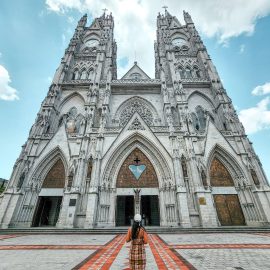After crossing the land border from north of Chile – San Pedro de Atacama to Uyuni 3 day tour , it was time to go for another land border crossing to my 79th country Argentina. Technically it was my 2nd entry to Argentina because I had previously entered from the south of Chile to Argentina as well. You could say I know my way around it having done it twice myself and spent a month in Argentina backpacking. So, if you are about to plan a trip to Argentina, read on till the end as i cover the how to plan, tips and 2, 3, and 4 weeks Argentina itinerary.
Plan a trip to Argentina
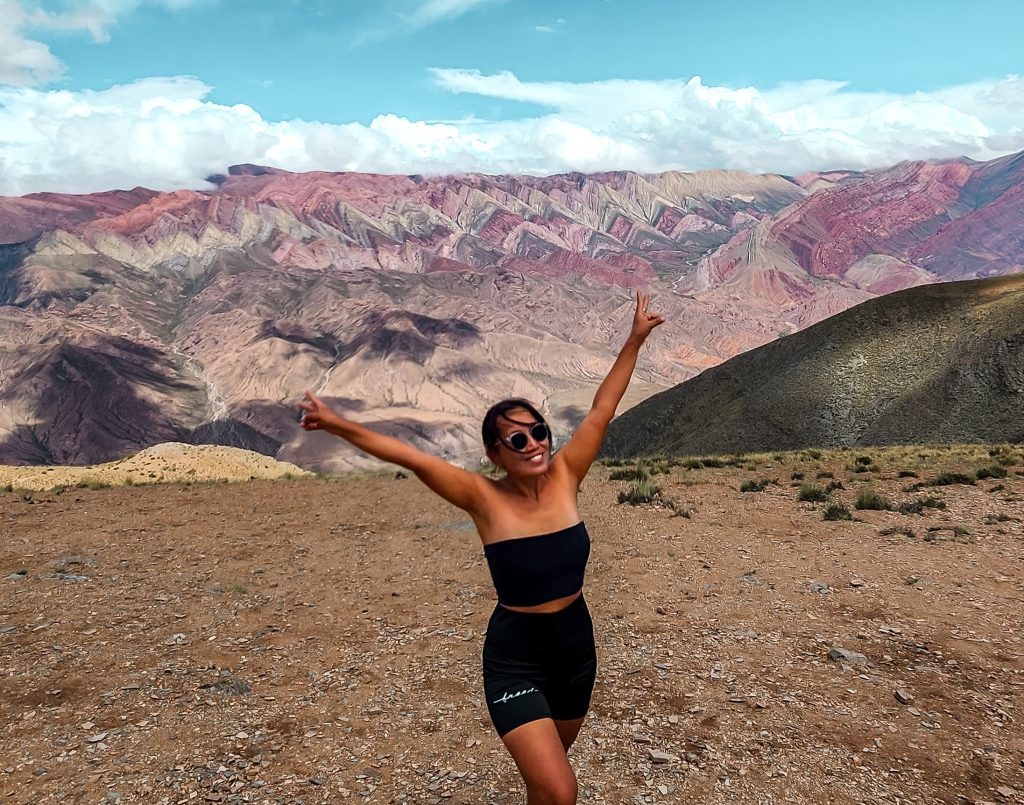
I am on the mission to travel all the 195 countries in the world (not in a race, more like in a slow and steady fashion) and recently completed 108 countries. It was a big milestone because I work hard, save for these trips and share what I know here on the blog for free so fellow travellers like you can benefit from it. Pls feel free to return the favour by ordering my new book on Amazon – A solo female traveler’s story: from Kathmandu to finding peace in 100+ countries
How to cross land border from Uyuni Bolivia to Jujuy, Argentina?
First thing that comes to mind on how to plan a trip to Argentina is how to get there. Obviously you can book flights but in my case, right after the San pedro de atacama to uyuni 3 day tour, I went to the new bus station in Uyuni make sure you don’t go to old one. Bought the overnight bus ticket to the border town called Villazón – La Quiaca (Horacio Guzmán International Bridge over La Quiaca River).
I arrived in the am and from the bus stop (Nueva Terminal de Ómnibuses de Villazón, Av. Tumusla, Villazón, Bolivia) to the immigration at the border is about 35 mins walk. I started walking but also keep an eye out for a taxi as I was tired from not much sleep at night in the bus. Gave a lift to a Argentina girl I met who was heading the same way and we both agreed it was a good idea to take the taxi because the queue was crazy long even at 7am!
After you stamp out/stamp in Argentina, she went off to hitchhike and I happened to meet a mom and son going to a bus station so we shared taxi to get there. Once I was at the bus station, I bought ticket to Jujuy (Jujuy San Salvador de Jujuy) and arrived in the late afternoon. If you have more time you can of course get off in Tilcara or Humahuaca but I went to see these places from Jujuy so no time lost. More on the itinerary below.


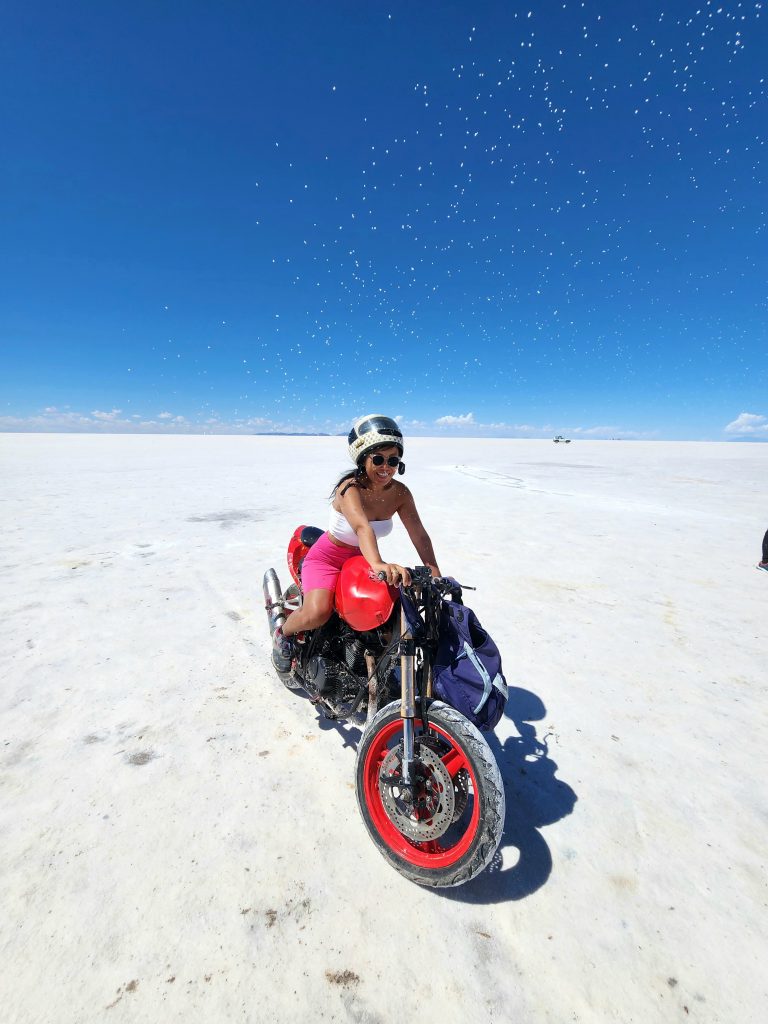
History of Argentina
Argentina’s history is rich and complex, marked by waves of indigenous cultures, European colonization, and the struggle for independence. Before the arrival of Europeans, Argentina was home to diverse indigenous groups, including the Diaguita, Guarani, and Mapuche. The Spanish arrived in the early 16th century, with Buenos Aires being founded in 1580.
The 18th and 19th centuries saw a growing movement for independence, culminating in the May Revolution of 1810 and the declaration of independence from Spain on July 9, 1816. The 19th century was turbulent, characterized by civil wars and conflicts between federalists and centralists.
The late 19th and early 20th centuries brought significant European immigration, transforming Argentina into one of the wealthiest nations in the world, known for its vibrant cultural life and economic prosperity. However, the 20th century also saw periods of political instability, military dictatorships, and economic crises, notably the Dirty War from 1976 to 1983, during which thousands of people were disappeared.
Modern Argentina
Today, Argentina is a vibrant and diverse nation, known for its rich cultural heritage, beautiful landscapes, and dynamic cities. Buenos Aires, the capital, is a bustling metropolis renowned for its European architecture, tango music, and vibrant nightlife.
The country’s economy is diverse, with strong agricultural, industrial, and technological sectors, though it has faced challenges such as inflation and debt. Argentina is a democratic republic, and its recent political landscape has been marked by efforts to stabilize the economy and address social issues. The country is also celebrated for its contributions to arts and sports, particularly in literature, film, and football, with iconic figures like Jorge Luis Borges and Lionel Messi.
Modern Argentina is a blend of indigenous, European, and global influences, making it a unique and fascinating destination for travelers and a significant player on the international stage.
As some of you know, I’m on a quest to visit all UN-recognized countries. Your support in sharing my blog posts or socials means the world to me!
How to plan a trip to Argentina
For accommodation, I recommend using booking.com and sorting with price, then consider the ones with highest reviews plus within 1km of center/old town. Below I have researched and linked the best ones with this filter (at the time of writing)
For tours, I recommend using get your guide and walking tours available in most places
1. Pre-Trip Preparation
Research and Decide on Travel Dates
Best time to visit: March to May (fall) and September to November (spring) but i was there in December -Janurary which was hot in the north (30+ degrees) and cold in the south (around 5 degrees in Patagonia). So what I always say is anytime is good to visit anywhere, just wear the right clothes and shoes.
2. Visa and Travel Documents
Check Visa Requirements
Check if you require the visa requirements before you go because every country has different rules and regulations that we have to follow. As an Australian passport holder, I don’t need a visa to go to Argentina because basically it was on arrival visa stamp on the passport but you may need a visa depending on your passport. And if you do need visa, getting visa first would be your best next step.
Ensure Passport Validity
Passport should be valid for at least six months beyond the date of entry
Travel Insurance
Comprehensive coverage for health, trip cancellation, and theft
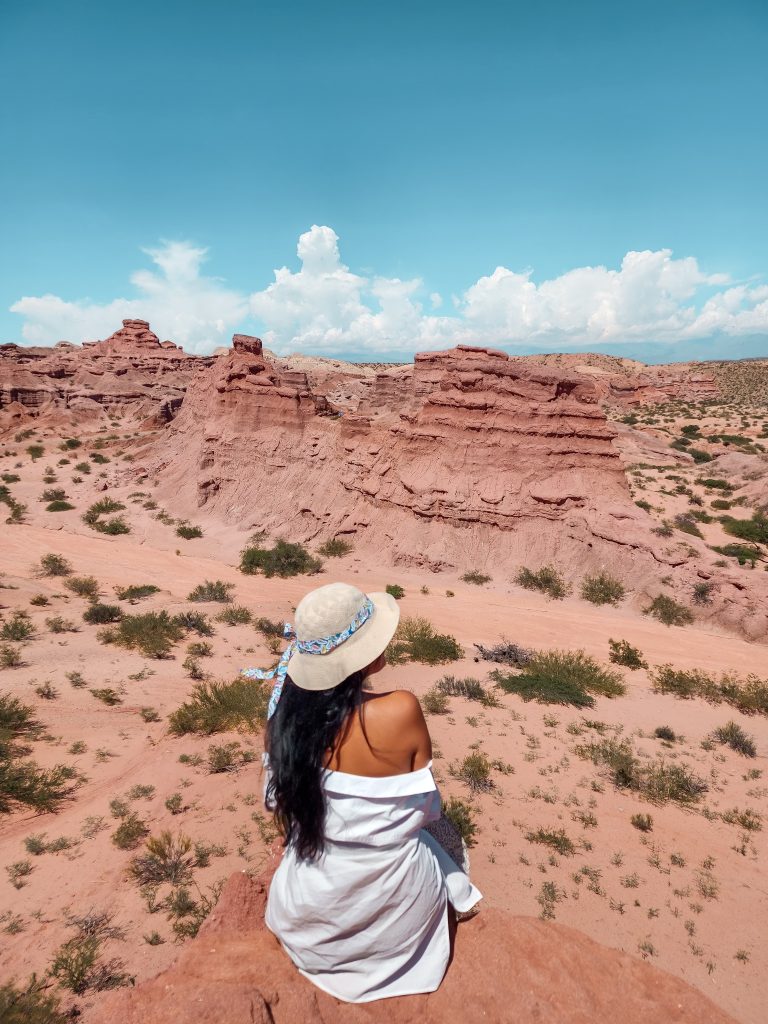
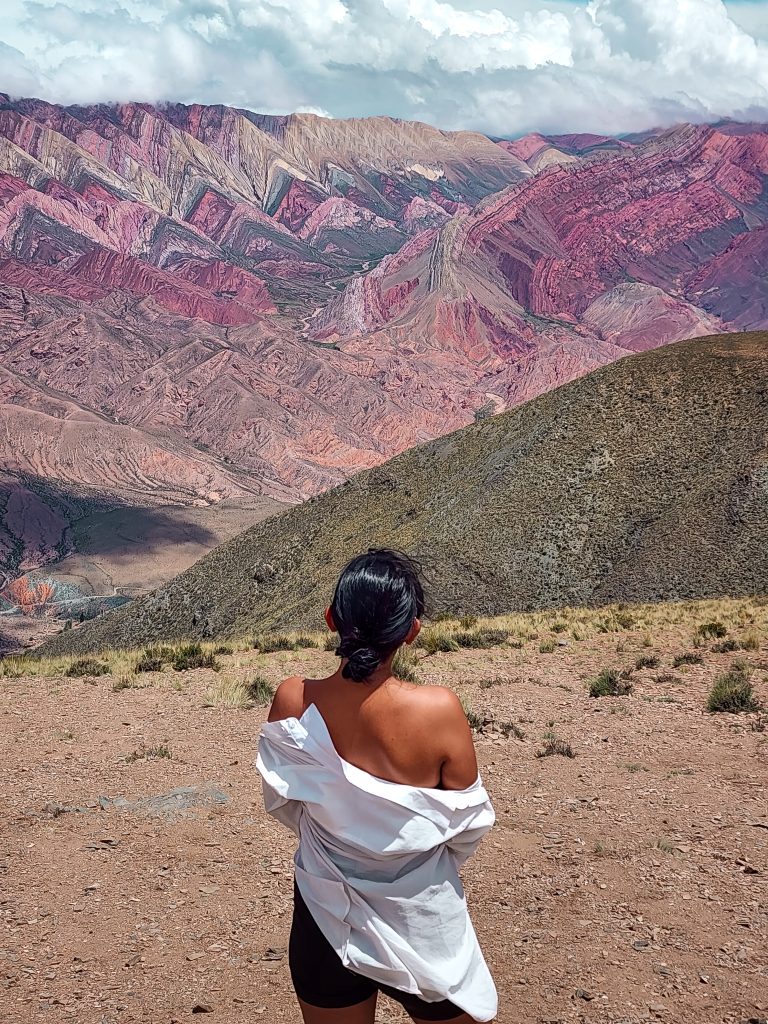
3. Budget Planning
Estimate costs for flights, accommodation, food, activities, and transportation
A. Flights:
International Flights:
From North America: $700 – $1,500 USD round trip, depending on the season and departure city.
From Europe: $800 – $1,600 USD round trip.
From Australia: $1,200 – $2,000 USD round trip.
Tips: Book early, look for deals on travel comparison websites, consider flying into alternative airports (e.g., Córdoba instead of Buenos Aires).
Domestic Flights:
Cost: $50 – $300 USD per flight, depending on distance and time of booking.
Popular Routes: Buenos Aires to Mendoza, Buenos Aires to Bariloche, Buenos Aires to El Calafate.
B. Accommodation:
For accommodation, I recommend using booking.com and sorting with price, then consider the ones with highest reviews plus within 1km of center/old town. Below I have researched and linked the best ones with this filter (at the time of writing)
For tours, I recommend using get your guide and walking tours available in most places
Hotels:
Budget: $30 – $60 USD per night for basic hotels or hostels.
Mid-Range: $70 – $150 USD per night for 3-4 star hotels.
Luxury: $200 – $500+ USD per night for 5-star hotels and resorts.
Alternative Options:
Airbnb: $25 – $150 USD per night, depending on location and property type.
Hostels: $10 – $30 USD per night for dormitory beds, $40 – $70 USD for private rooms.
Guesthouses and Boutique Hotels: $50 – $120 USD per night.
C. Food:
Daily Budget:
Budget Travelers: $10 – $20 USD per day (local eateries, street food).
Mid-Range Travelers: $20 – $50 USD per day (mix of local and mid-range restaurants).
Luxury Travelers: $50 – $100+ USD per day (fine dining, wine tasting).
Typical Costs:
Local Meal: $3 – $7 USD at a café or casual restaurant.
Mid-Range Restaurant: $10 – $25 USD per person for a three-course meal.
Fine Dining: $40 – $80+ USD per person.
Specialties: Argentine steak dinner with wine can range from $20 – $60 USD.

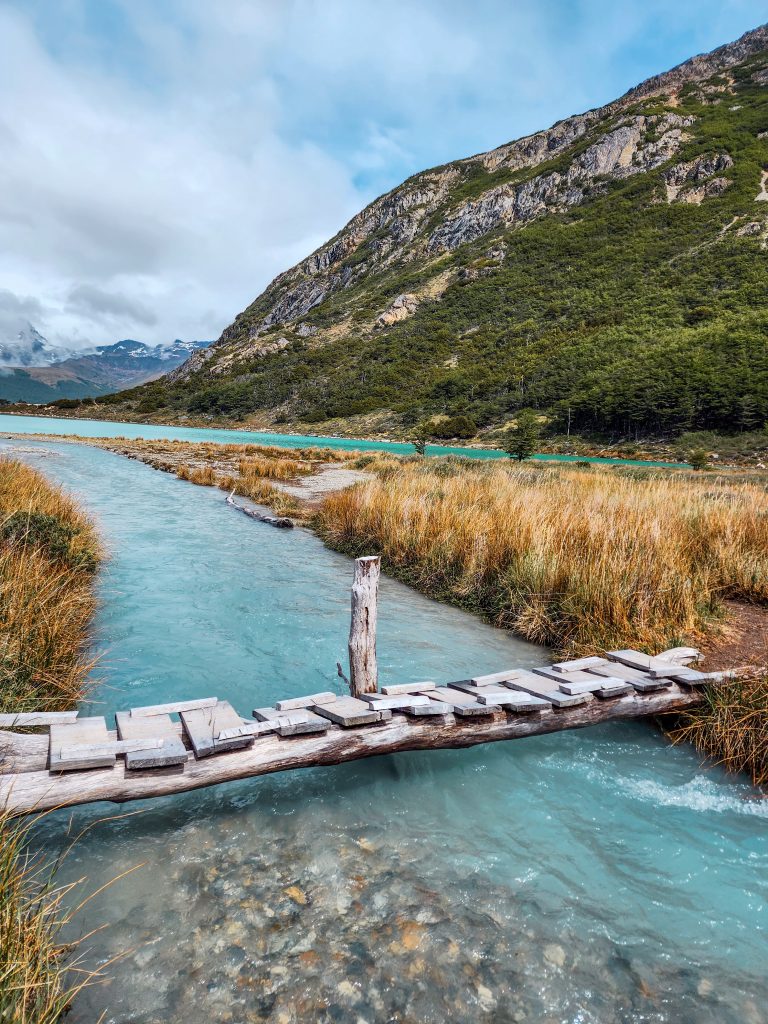
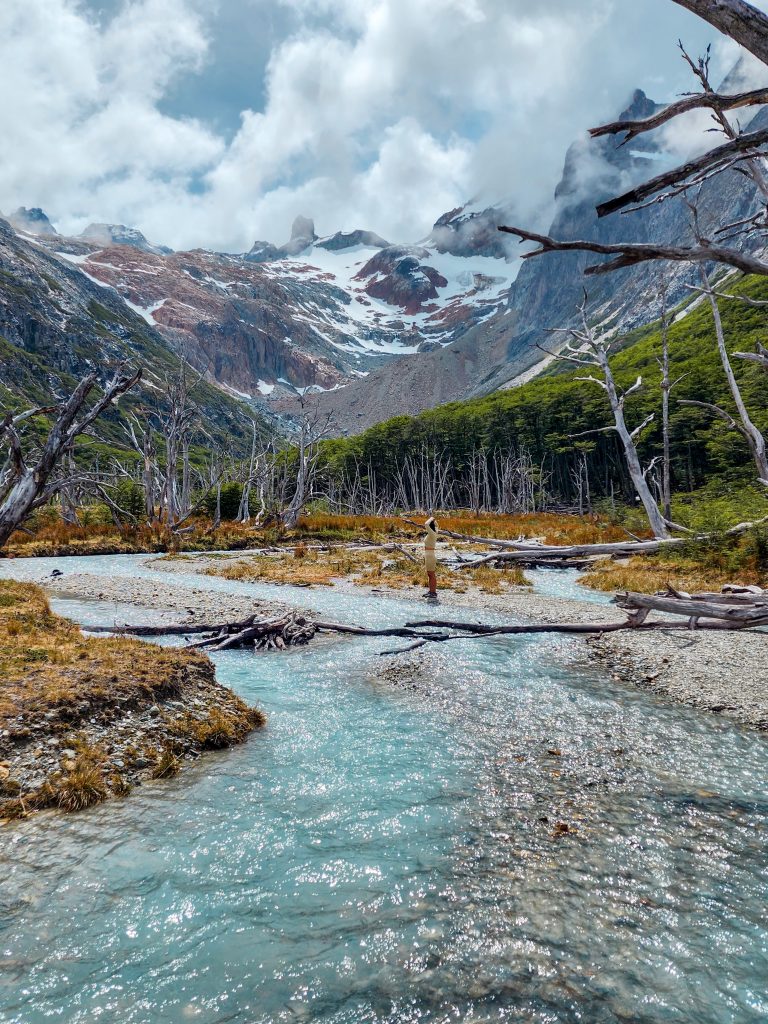
D. Activities:
Guided Tours:
City Tours: $20 – $50 USD per person for half-day tours.
Full-Day Excursions: $50 – $150 USD per person (e.g., wine tours in Mendoza, boat tours in Iguazú Falls).
Adventure Activities: $50 – $200+ USD per person (e.g., glacier trekking, horseback riding in Patagonia).
Entrance Fees:
Museums and Cultural Sites: $5 – $15 USD.
National Parks: $10 – $30 USD, depending on the park (e.g., Iguazú National Park, Los Glaciares National Park).
Miscellaneous Activities:
Tango Show: $30 – $100 USD per person, often includes dinner.
Ski Pass in Bariloche: $50 – $100 USD per day.
E. Transportation:
Public Transportation:
City Buses and Subways: $0.20 – $0.50 USD per ride in Buenos Aires.
Long-Distance Buses: $20 – $100 USD, depending on the distance and class (e.g., Buenos Aires to Mendoza or Bariloche).
Taxis and Rideshares:
Cost: $2 – $10 USD for short rides within cities.
Airport Transfers: $15 – $30 USD from Buenos Aires city center to Ezeiza Airport (EZE).
Car Rentals:
Cost: $30 – $100 USD per day, depending on the car type and rental duration.
Fuel: Approximately $1.10 USD per liter ($4.15 USD per gallon).
Sample Budget for a 1-Month Trip to Argentina

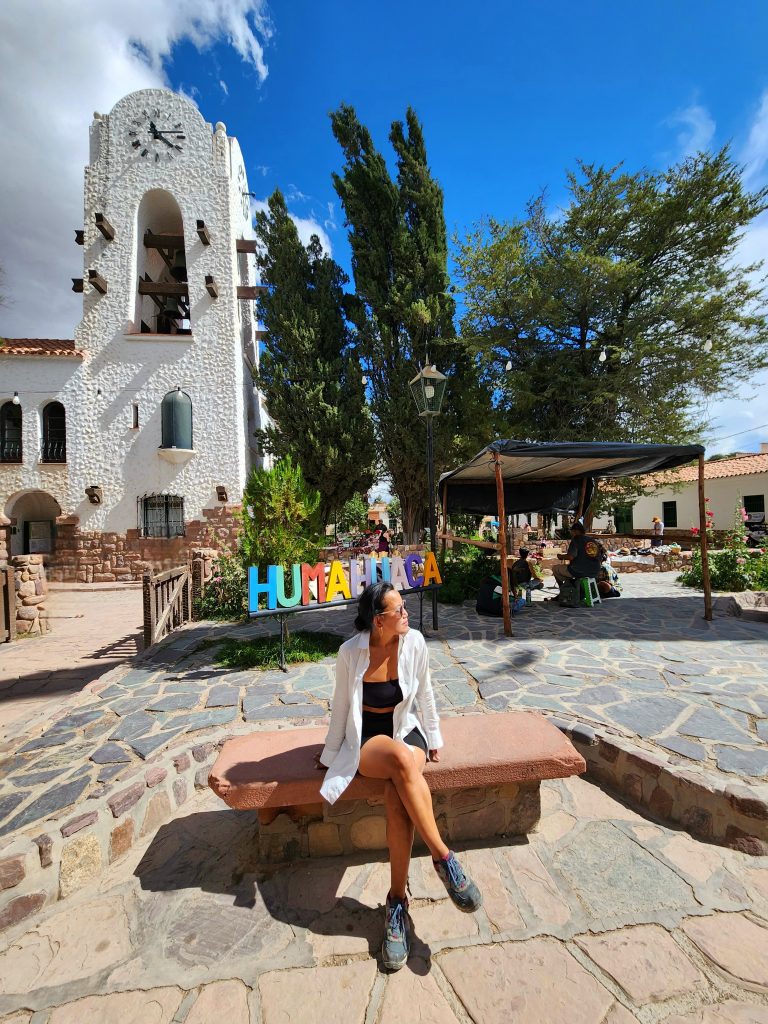
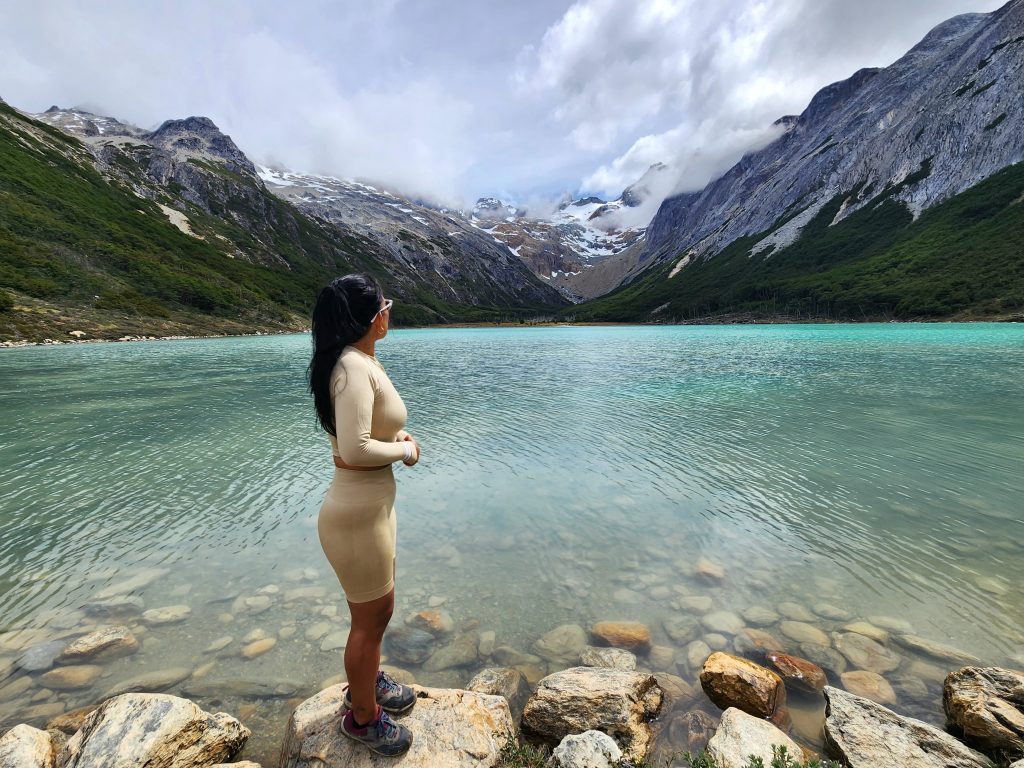
A. Flights:
International Flight:
Cost: $800 – $1,500 USD (round trip from North America/Europe/Australia).
Domestic Flights:
Cost: $200 – $500 USD (e.g., Buenos Aires to Patagonia and back, additional regional flights).
B. Accommodation:
For accommodation, I recommend using booking.com and sorting with price, then consider the ones with highest reviews plus within 1km of center/old town. Below I have researched and linked the best ones with this filter (at the time of writing)
For tours, I recommend using get your guide and walking tours available in most places
Budget:
Hostels: $10 – $30 USD per night.
Total Cost: $300 – $900 USD for 30 nights.
Mid-Range:
Hotels/Airbnb: $40 – $100 USD per night.
Total Cost: $1,200 – $3,000 USD for 30 nights.
Luxury:
High-End Hotels: $150 – $400+ USD per night.
Total Cost: $4,500 – $12,000 USD for 30 nights.
C. Food:
Budget:
Cost: $10 – $20 USD per day.
Total Cost: $300 – $600 USD.
Mid-Range:
Cost: $20 – $50 USD per day.
Total Cost: $600 – $1,500 USD.
Luxury:
Cost: $50 – $100+ USD per day.
Total Cost: $1,500 – $3,000 USD.
D. Activities:
Guided Tours and Excursions:
Cost: $500 – $1,000 USD.
Entrance Fees:
Museums/National Parks: $100 – $300 USD.
Adventure Activities:
Cost: $200 – $500 USD (e.g., glacier trekking, wine tours).
Total Cost: $800 – $1,800 USD.
E. Transportation:
Public Transportation:
Cost: $50 – $100 USD.
Taxis and Rideshares:
Cost: $100 – $200 USD.
Long-Distance Buses/Trains:
Cost: $150 – $400 USD.
Car Rentals:
Cost: $30 – $100 USD per day.
Total Cost: $900 – $3,000 USD.
Total Cost: $300 – $1,000 USD (excluding car rentals).
F. Miscellaneous:
Souvenirs and Shopping:
Cost: $100 – $500 USD.
Travel Insurance:
Cost: $100 – $300 USD.
SIM Card/Phone Plan:
Cost: $20 – $50 USD.
Emergency Fund:
Cost: $200 – $500 USD.
Total Cost: $420 – $1,350 USD.
Sample Budgets:
Budget Traveler:
Flights: $1,200 USD
Accommodation: $600 USD (hostels)
Food: $450 USD (budget meals)
Activities: $800 USD
Transportation: $500 USD (public transport and buses)
Miscellaneous: $420 USD
Total Cost: $3,970 USD or less if you don’t have any miscellaneous costs
Mid-Range Traveler:
Flights: $1,200 USD
Accommodation: $1,800 USD (mid-range hotels/Airbnb)
Food: $1,050 USD (mid-range dining)
Activities: $1,200 USD
Transportation: $700 USD (mix of transport options)
Miscellaneous: $700 USD
Total Cost: $6,650 USD
Luxury Traveler:
Flights: $1,500 USD
Accommodation: $7,500 USD (high-end hotels)
Food: $2,700 USD (luxury dining)
Activities: $1,800 USD
Transportation: $1,500 USD (including car rentals)
Miscellaneous: $1,350 USD
Total Cost: $16,350 USD
4. Flights and Transportation
After you have your budget set, it’s time to book everything you need.
Book Flights
Compare prices on various travel websites
Consider direct flights vs. layovers
Local Transportation
Research domestic flights for long distances (e.g., Buenos Aires to Ushuaia)
Bus and train options for regional travel
If you drive car rentals for flexibility
5. Accommodation
Choose Accommodation Types
For accommodation, I recommend using booking.com and sorting with price, then consider the ones with highest reviews plus within 1km of center/old town. Below I have researched and linked the best ones with this filter (at the time of writing)
For tours, I recommend using get your guide and walking tours available in most places
Hotels, hostels, Airbnbs, and guesthouses
Consider location, amenities, and reviews
Book in Advance
Especially during peak tourist seasons
6. Itinerary Planning
Top Destinations to Include & to help you plan a trip to Argentina better below are 2 weeks, 3 weeks, and 4 weeks itineraries.
Buenos Aires: Culture, history, and nightlife
Iguazú Falls: Natural wonder
Mendoza: Wine region
Patagonia: Glaciers and hiking (e.g., El Calafate, El Chaltén)
Bariloche: Lakes and mountains
Córdoba: Colonial history and architecture
Salta and Jujuy: Unique landscapes and culture
Activity Planning
City tours, hiking, wine tasting, tango shows, wildlife watching
7. Cultural Insights and Language
Learn Basic Spanish Phrases
Essential for communication and navigating local experiences
Cultural Etiquette
Greeting customs, dining etiquette, and social norms
8. Health and Safety
Vaccinations and Health Precautions
Check CDC or WHO recommendations
Safety Tips
Stay aware of surroundings, avoid showing valuables, use reputable transportation
9. Packing List
Clothing
Layered clothing for varying climates
Comfortable shoes for walking and hiking
Travel Essentials
Travel documents, money, travel guide, power adapters
Special Items
Camera, reusable water bottle, sunscreen, insect repellent
10. On Arrival
Currency Exchange (Argentine Peso) There’s a lot of talk about black market rate and official rate but the difference wasn’t much after the new government, still check both rates and go for the ones that gives you more value. Better to bring USD and exchange it once there (Options at airports, banks, and ATMs, western unions and even money change people on the street in busy cities).
Local SIM Card or International Roaming
Stay connected with roaming plan or a local SIM
What sim card to buy in Argentina?
When traveling to Argentina, there are several options for purchasing a SIM card to stay connected. The three main mobile network providers in Argentina are Claro, Movistar, and Personal. Each offers prepaid SIM cards that are suitable for travelers.
Options for SIM Cards in Argentina
1. Claro:
- Network Coverage: Wide coverage across the country, including remote areas.
- SIM Card Cost: Approximately $3 – $5 USD.
- Data Plans:
- $5 USD for 1 GB (valid for 7 days).
- $10 USD for 3 GB (valid for 15 days).
- $15 USD for 5 GB (valid for 30 days).
- Where to Buy: Claro stores, kiosks, airports, and major retail stores.
2. Movistar:
- Network Coverage: Good coverage in urban and rural areas.
- SIM Card Cost: Approximately $3 – $5 USD.
- Data Plans:
- $5 USD for 1 GB (valid for 7 days).
- $10 USD for 3 GB (valid for 15 days).
- $15 USD for 5 GB (valid for 30 days).
- Where to Buy: Movistar stores, kiosks, airports, and major retail stores.
3. Personal:
- Network Coverage: Extensive coverage, especially in cities and tourist areas.
- SIM Card Cost: Approximately $3 – $5 USD.
- Data Plans:
- $5 USD for 1 GB (valid for 7 days).
- $10 USD for 3 GB (valid for 15 days).
- $15 USD for 5 GB (valid for 30 days).
- Where to Buy: Personal stores, kiosks, airports, and major retail stores.
How to Buy and Activate a SIM Card
- Purchase the SIM Card:
- Visit any official store of Claro, Movistar, or Personal, or buy from kiosks and airports.
- You may need to show your passport for registration.
- Install the SIM Card:
- Insert the SIM card into your phone. Make sure your phone is unlocked to use a foreign SIM card.
- Activate the SIM Card:
- Follow the instructions provided with the SIM card to activate it.
- You may need to dial a specific code or send a text message to complete the activation.
- Choose and Activate a Data Plan:
- Select a data plan that suits your needs.
- Activate the plan by following the instructions, which usually involve dialing a code or sending a text message.
Tips for Using a SIM Card in Argentina
- Top-Up Options: You can top up your credit at convenience stores, kiosks, or online through the provider’s website or app.
- Language Barrier: If you don’t speak Spanish, it may be helpful to use a translation app or ask for assistance from someone who does.
- Coverage: Check the coverage map of your chosen provider to ensure good reception in the areas you plan to visit.
- Data Usage: Monitor your data usage to avoid running out of data unexpectedly. Most providers offer apps to check your balance and top up easily.
Transportation to Accommodation
Pre-arranged transfers, taxis, or public transport options
10. Enjoying Your Trip
First, plan a trip to Argentina a bit, then it is time to enjoy. Engage with locals, try traditional foods, participate in cultural activities but also stay flexible. Allow room for spontaneous adventures and unexpected discoveries.
2-Week Itinerary: Jujuy, Salta, Mendoza, and Buenos Aires



Week 1: Salta and Mendoza
Day 1: Bolivia to Jujuy
- Morning: Right after the 3 day Uyuni tour, I went to the new bus station in Uyuni make sure you don’t go to old one. Bought the overnight bus ticket to the border town called Villazón – La Quiaca (Horacio Guzmán International Bridge over La Quiaca River). I arrived in the am and from the bus stop (Nueva Terminal de Ómnibuses de Villazón, Av. Tumusla, Villazón, Bolivia) to the immigration at the border is about 35 mins walk. I started walking but also keep an eye out for a taxi as I was tired from not much sleep at night in the bus. Gave a lift to a Argentina girl I met who was heading the same way and we both agreed it was a good idea to take the taxi because the queue was crazy long even at 7am!
After you stamp out/stamp in Argentina, she went off to hitchhike and I happened to meet a mom and son going to a bus station so we shared taxi to get there. Once I was at the bus station, I bought ticket to Jujuy (Jujuy San Salvador de Jujuy) and arrived in the late afternoon. If you have more time you can of course get off in Tilcara or Humahuca but I went to see these places from Jujuy so no time lost. - Afternoon: Arrived in Jujuy, checked into accommodation.
- Evening: Relaxed after the long journey, enjoyed a leisurely dinner. Unfortunately it was Sunday so most places were closed but I found a couple of decent restaurants near my place. RAMIREZ, Restaurant Senador and Manos.
For accommodation, I recommend using booking.com and sorting with price, then consider the ones with highest reviews plus within 1km of center/old town. Below I have researched and linked the best ones with this filter (at the time of writing)
For tours, I recommend using get your guide and walking tours available in most places
Day 2: Humahuaca Day Trip

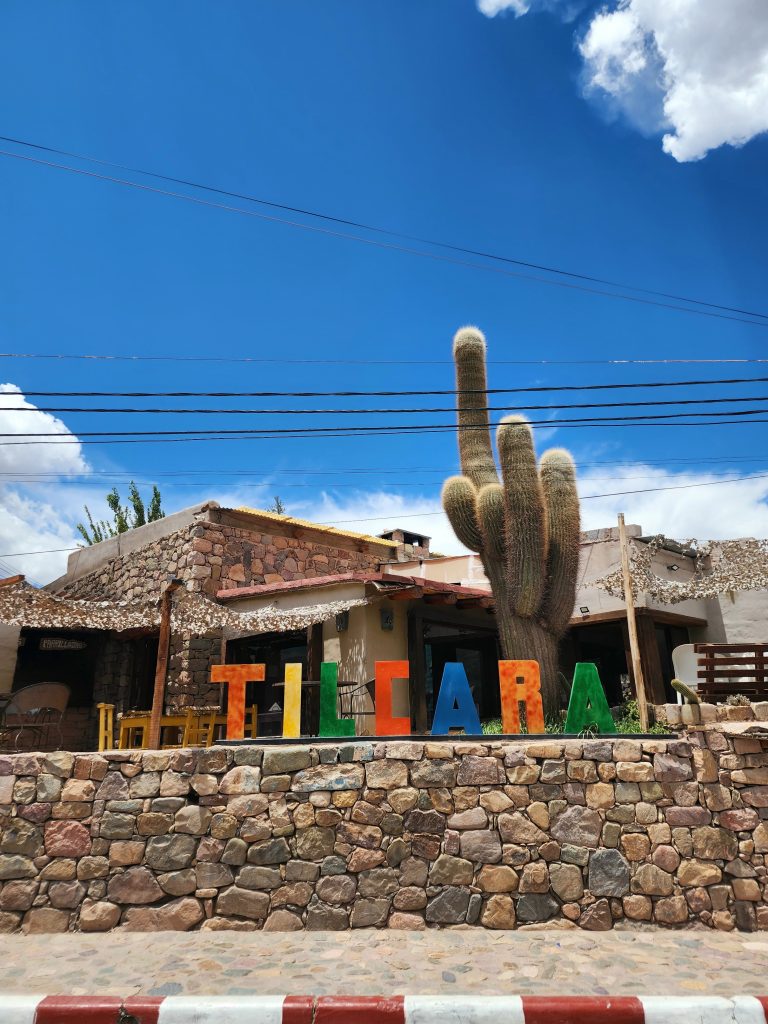
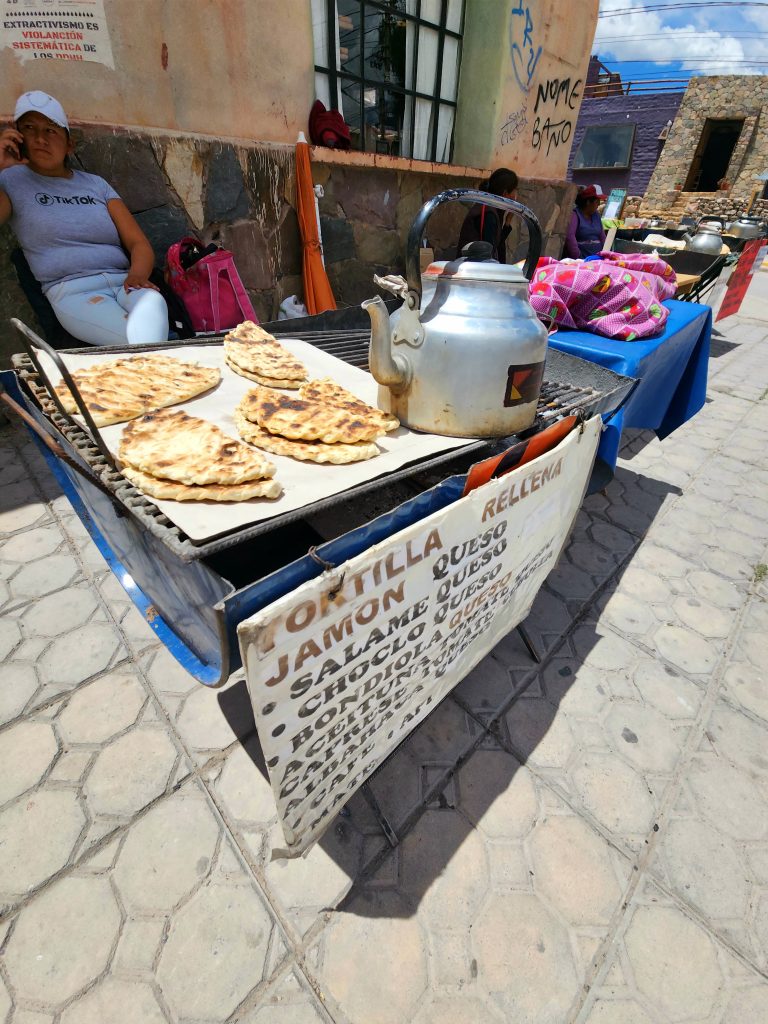
- Morning: Go on a day trip that covers the northern region of Argentina as it makes sense to see it while you are here and def would look better than from the bus window! 7 colours mountain as well as 14 colours one – Purmamarca, Tilcara and Humahuaca, a UNESCO World Heritage Site.
- Afternoon: Make sure your tour includes Hornocal: Tour of the 14 Colors Mountain & Humahuaca´s Gorge. Explore the town of Humahuaca, visit the Monumento a los Héroes de la Independencia.
- Evening: Return to Jujuy, enjoy dinner at a local restaurant.
Day 3: City tour Jujuy
- Morning: Last few days been full on so sleep in, leisurely breakfast.
- Day: In Jujuy, Argentina, there are several must-see attractions that offer a rich glimpse into the region’s culture and history.
Start your exploration at Plaza Belgrano, the main square surrounded by historic buildings and lively cafés, which serves as a central hub of local life.
Nearby, you’ll find the Catedral de San Salvador, renowned for its beautiful architecture and historical significance. The Museo Histórico Provincial Juan Galo Lavalle provides a fascinating look into Jujuy’s past, featuring exhibits on indigenous culture and the Argentine War of Independence.
The Casa de Gobierno, with its distinctive architecture, and the Teatro Mitre, known for its cultural performances, both reflect the region’s political and artistic heritage. For a scenic excursion, visit the Paseo de los Colorados, famous for its striking rock formations and stunning views just outside the city.
The Monumento a los Héroes de la Independencia honors the local heroes of Argentina’s fight for independence. Iglesia de San Francisco, with its colonial architecture and beautiful interior, is another significant religious site.
The Cultural Center of Jujuy (Centro Cultural y Museo Culturarte) showcases local art and cultural events, while the Mercado Municipal offers a vibrant taste of local cuisine and crafts.
Finish off the day dining at one of above mentioned restaurants.
Day 4: Jujuy to Salta City Tour
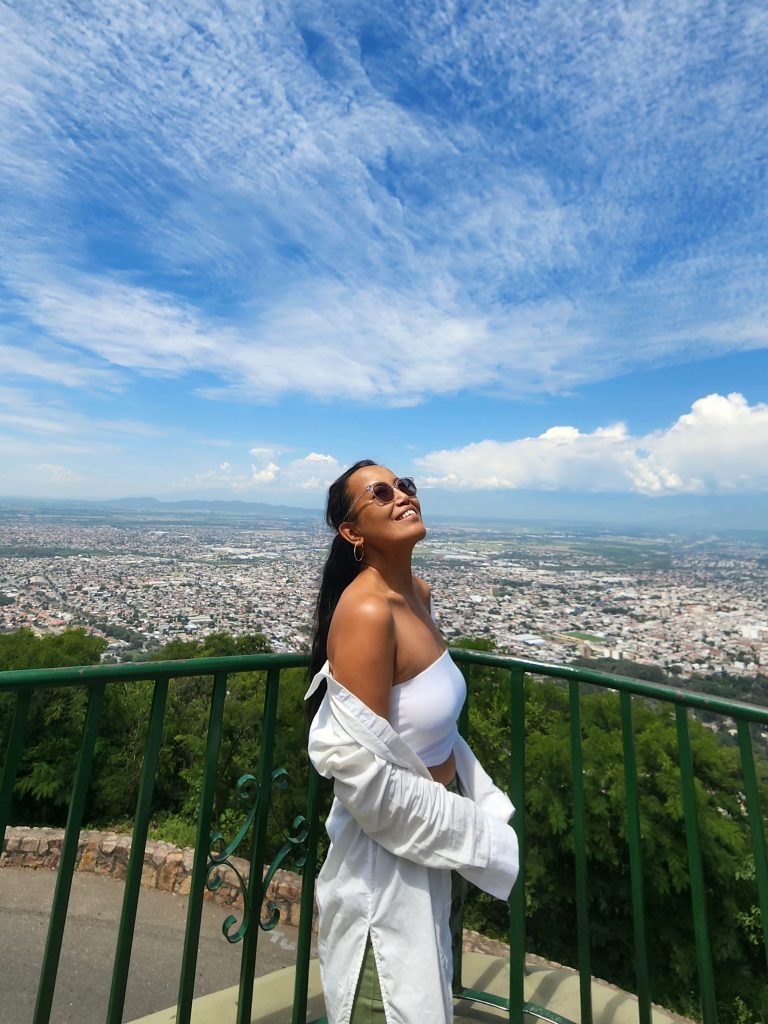

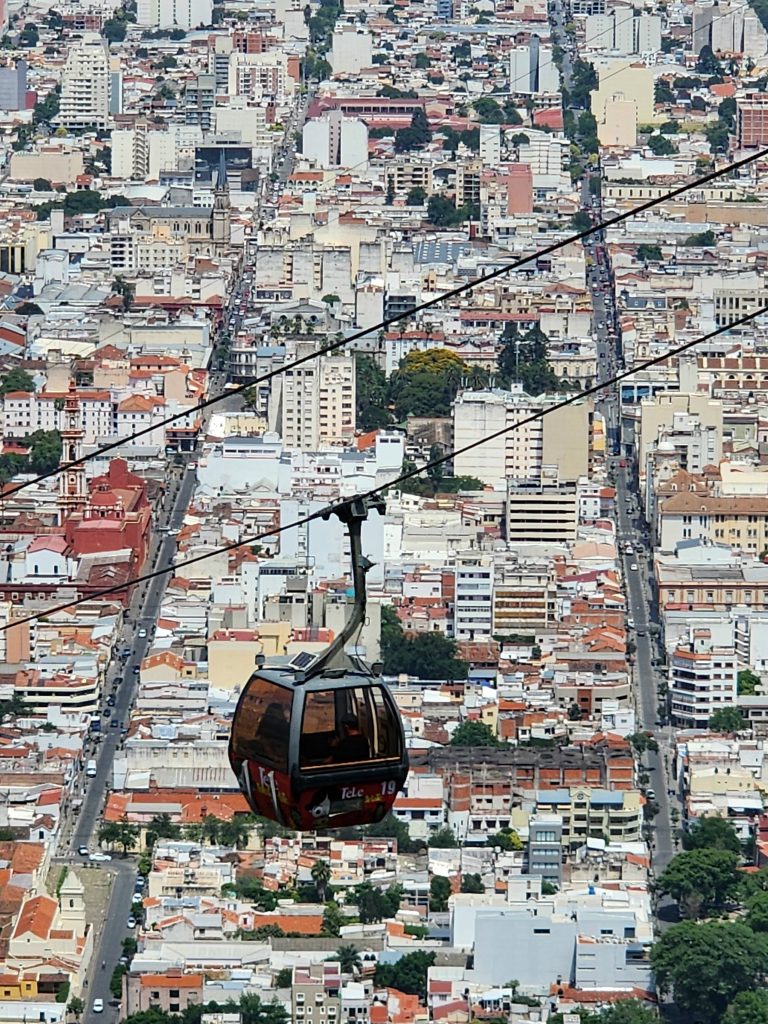
- Morning: Taxis are everywhere in Jujuy, grab one to the bus stop then buy a ticket to Salta. takes only couple of hours to get there.
- Mid morning: Check in and City tour of Salta.
In Salta, Argentina, a variety of must-see attractions highlight the city’s rich cultural and historical heritage.
Begin your visit at Plaza 9 de Julio, the heart of Salta, surrounded by colonial-era architecture and bustling cafés. The Catedral de Salta, located on the plaza, is a stunning example of neo-classical architecture with its beautiful interior. Adjacent to the cathedral is the Museo de Arqueología de Alta Montaña, which houses important Inca artifacts and mummies, offering a fascinating glimpse into pre-Columbian history. Another notable site is the Iglesia San Francisco, known for its striking façade and historic significance.
The historic Casa de Uriburu, a grand mansion turned museum, showcases local art and history. The charming Barrio Norte, with its elegant mansions and tree-lined streets, offers a picturesque stroll. Don’t miss the vibrant Mercado San Miguel, where you can experience local flavors and shop for traditional crafts.
Lastly, the nearby Quebrada de las Conchas, with its dramatic rock formations, makes for an unforgettable day trip from Salta, providing stunning natural scenery and a unique geological landscape. - Afternoon: Ride the Teleférico Salta San Bernardo for panoramic views.
- Evening: Enjoy local cuisine and folklore music at a peña (traditional music venue).
Day 5: Cafayate Day Trip
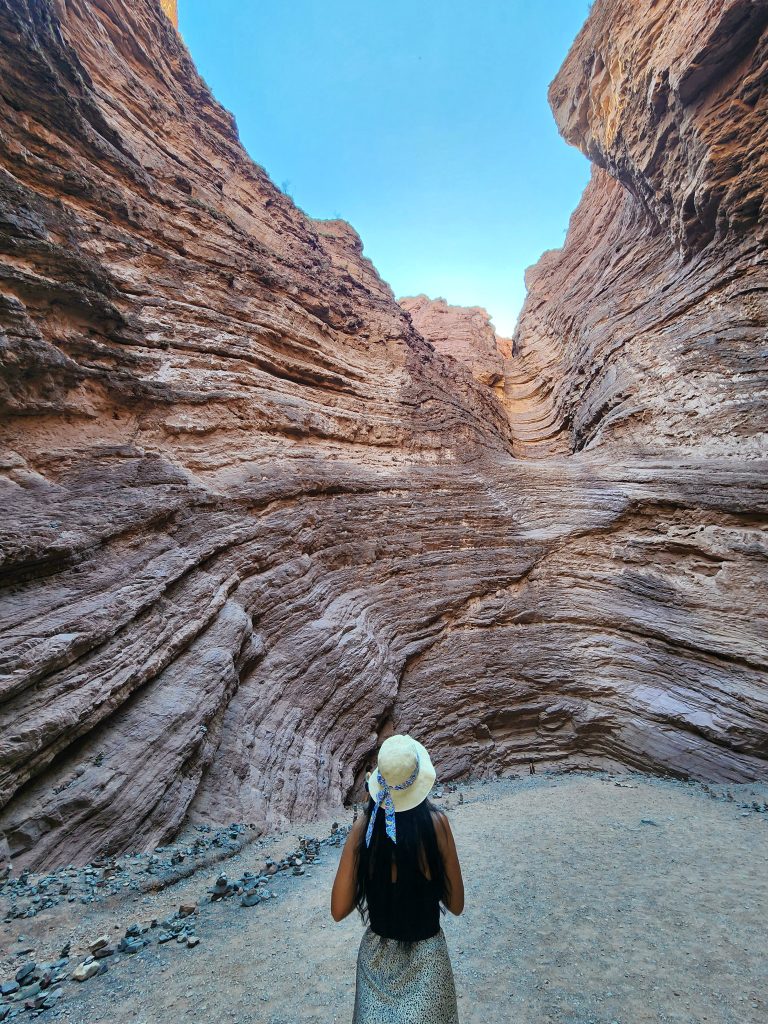

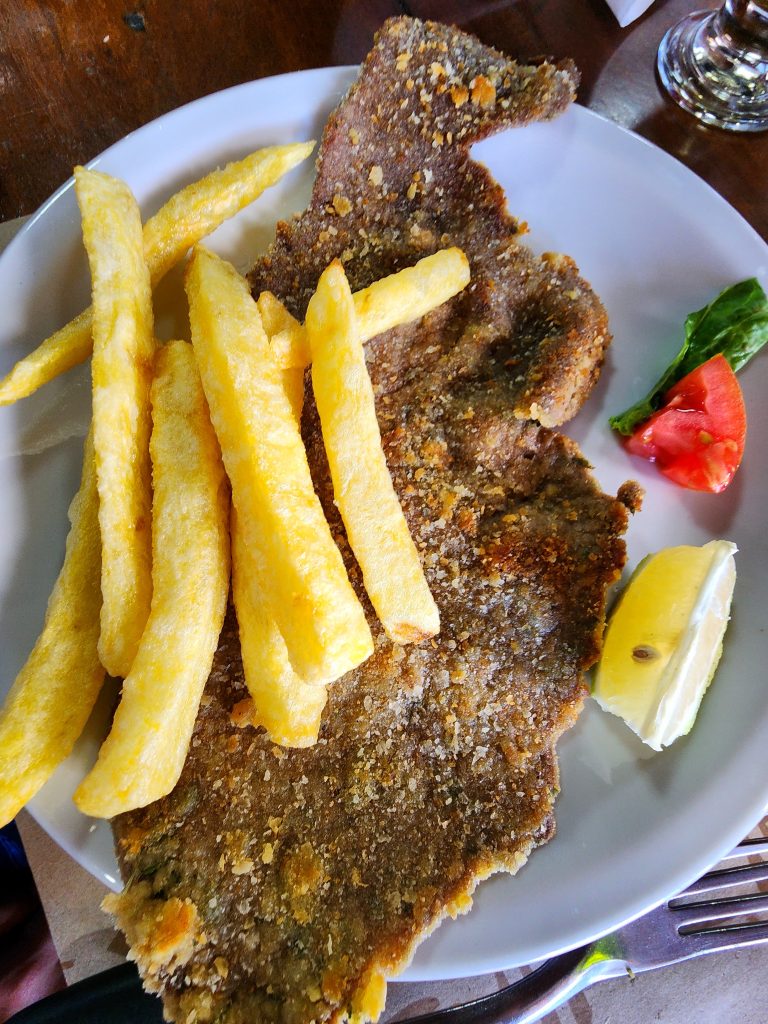
- Morning: Time to go on another day trip to Cafayate through the stunning Quebrada de las Conchas. OR if you haven’t been to Bolivia, suggest the Salinas Grande tour below.
- Afternoon: Visit local wineries and enjoy wine tasting, particularly Torrontés wine.
- Evening: Return to Salta, relax at your accommodation.
Day 6: Salta to Mendoza
- Morning: Fly from Salta to Mendoza because it is the fastest way which takes 3h 2m and costs $110 – $370. Alternatively, you can bus, which costs $45 – $140 and takes 19h+
- Afternoon: Arrive in Mendoza, check into your accommodation.
- Evening: Stroll around the city and enjoy dinner at a local restaurant.
Day 7: Mendoza Tour
- Morning: In Mendoza, Argentina, several key attractions offer a glimpse into the region’s vibrant culture and natural beauty. Begin your exploration at the Plaza Independencia, the city’s main square, which hosts lively markets, outdoor performances, and features a beautiful fountain and surrounding green spaces.
The nearby Parque General San Martín is a vast urban park with picturesque landscapes, including a lake, rose garden, and the prominent Cerro de la Gloria, which provides panoramic views of Mendoza. The Museo del Área Fundacional, located in the historical heart of Mendoza, provides insights into the city’s origins and early history.
Mendoza’s vibrant food scene can be experienced in the Mercado Central, where local produce, meats, and artisanal goods are on offer.
The city’s arts scene is well-represented at the Museo de Arte Moderno de Mendoza, which showcases contemporary art from Argentina and beyond.
For outdoor enthusiasts, the nearby Andes mountains offer opportunities for hiking, climbing, and skiing, with stunning landscapes and breathtaking views.
Day 8: Mendoza Wine Tour
- Morning: For wine enthusiasts, a visit to the Maipú or Luján de Cuyo regions is essential, where you can tour renowned vineyards and sample some of Argentina’s finest Malbecs and other wines. The Bodega Catena Zapata, an iconic winery, is particularly noted for its innovative wine-making techniques and stunning architecture.
- Afternoon: Continue the wine tour, visiting several vineyards.
- Evening: Dine at a vineyard restaurant.
Week 2: Buenos Aires

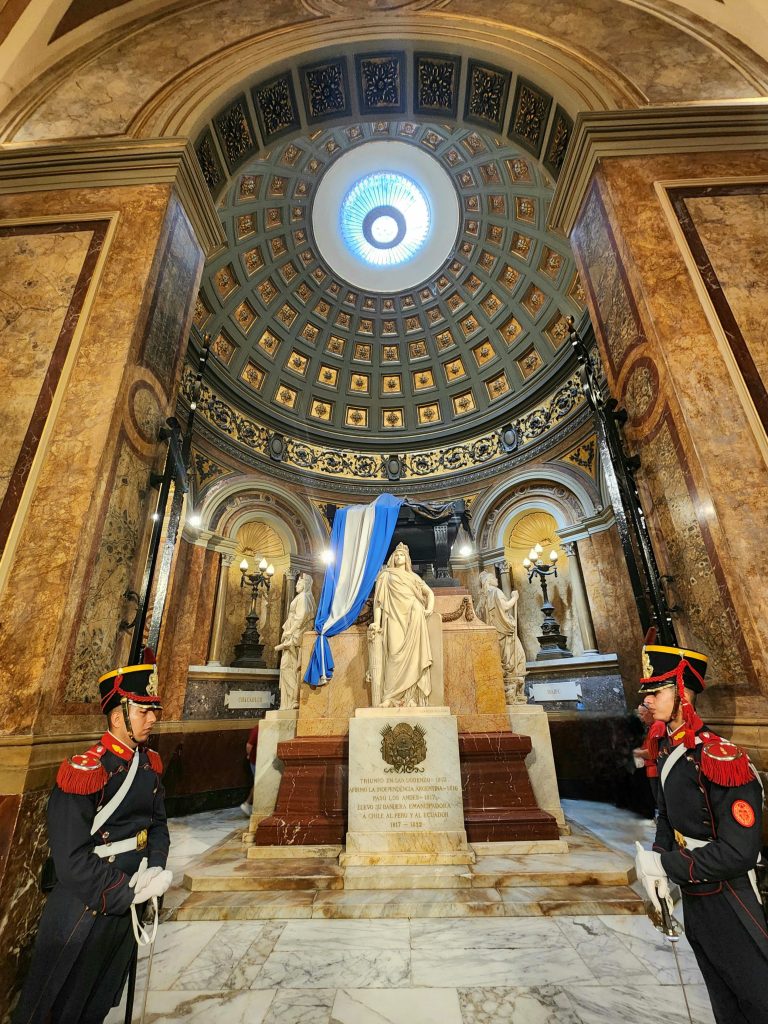
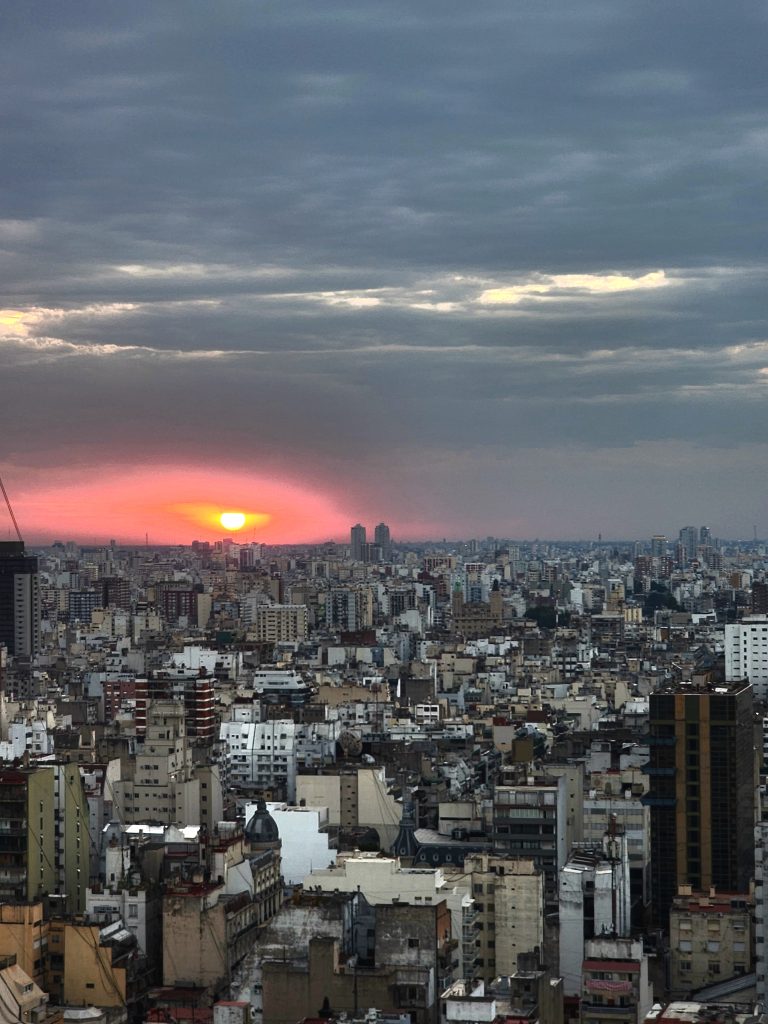
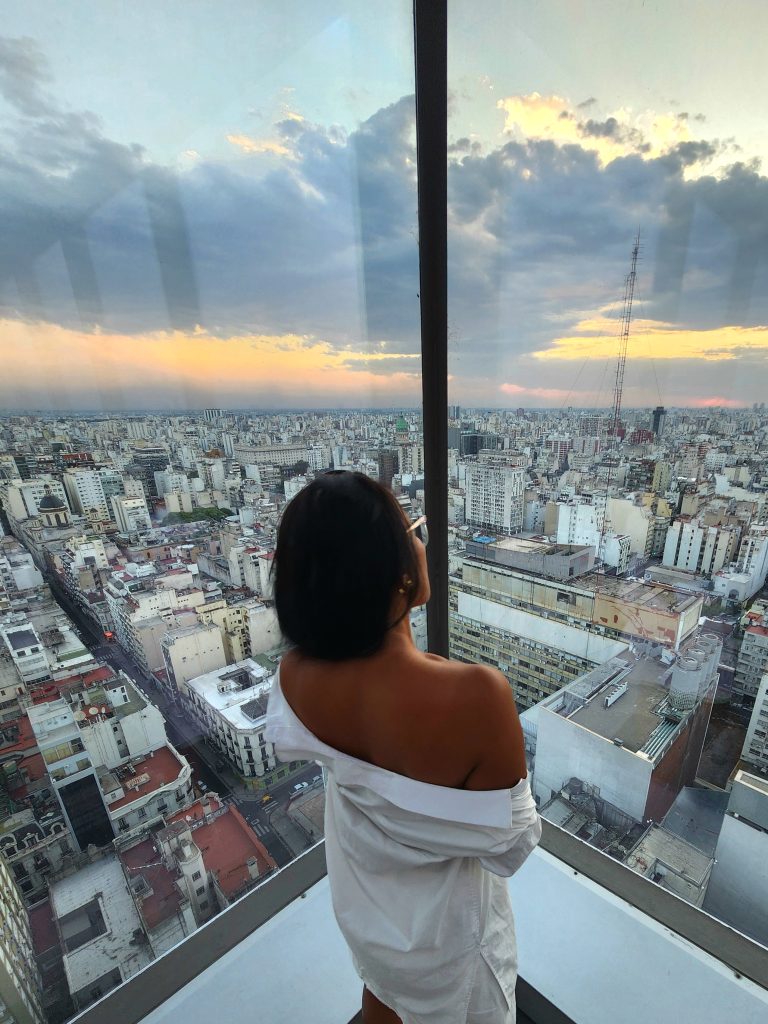
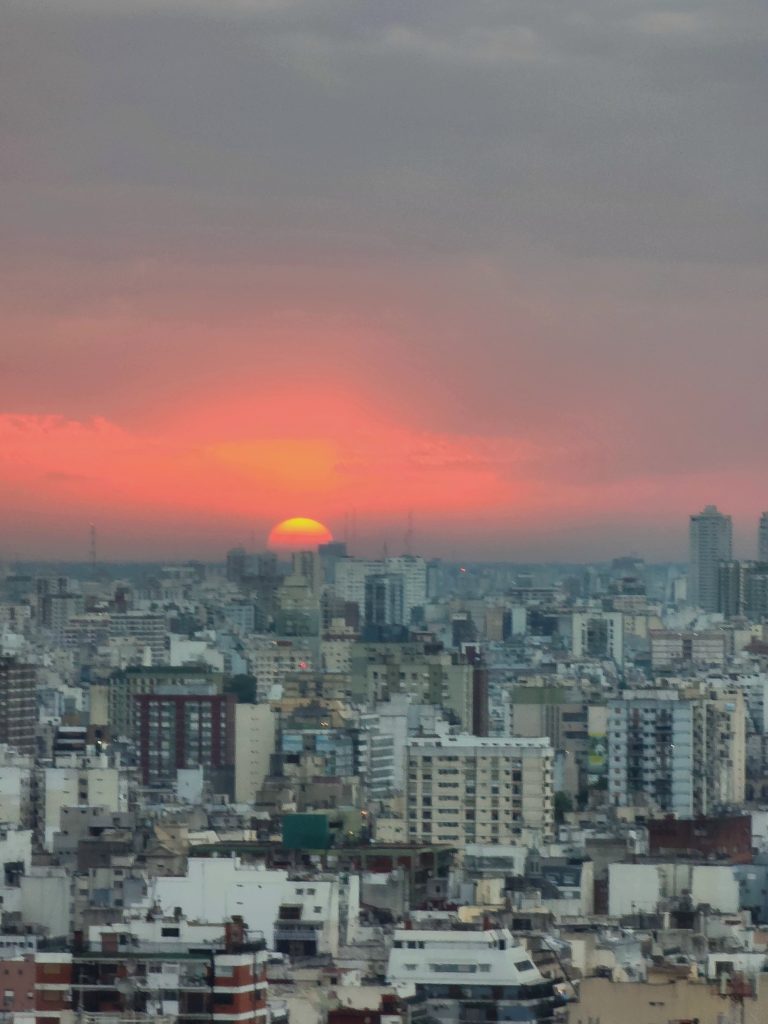
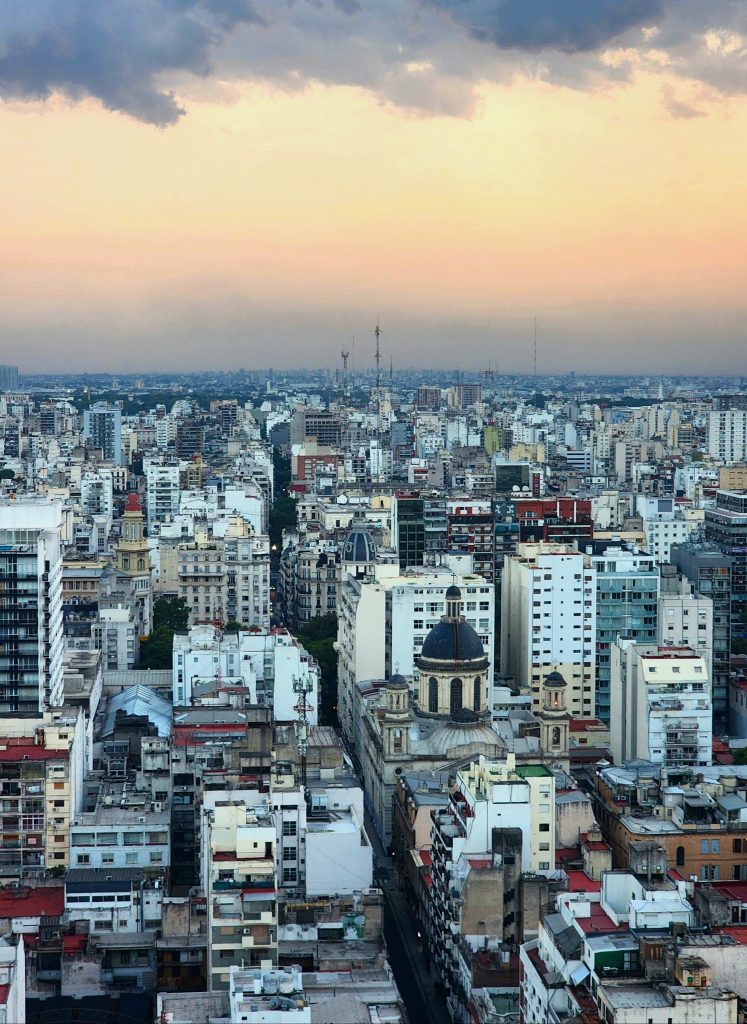
Day 9: Mendoza to Buenos Aires
- Morning: Fly from Mendoza to Buenos Aires if you are fixed on your days because the cheapest way to get from Mendoza to Buenos Aires costs only $39, and the quickest way takes just 3¼ hours which is by plane.
- Afternoon: Arrive in Buenos Aires, check into your accommodation.
- Evening: Dinner at a traditional Argentine steakhouse.
Day 10: Buenos Aires City Tour

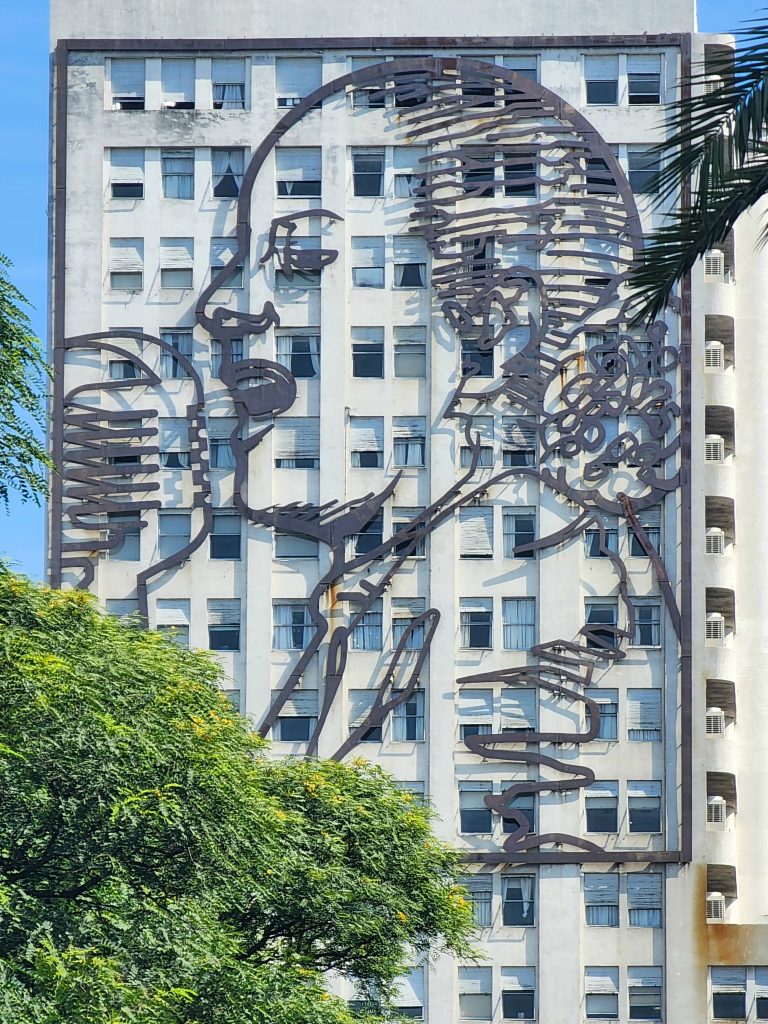


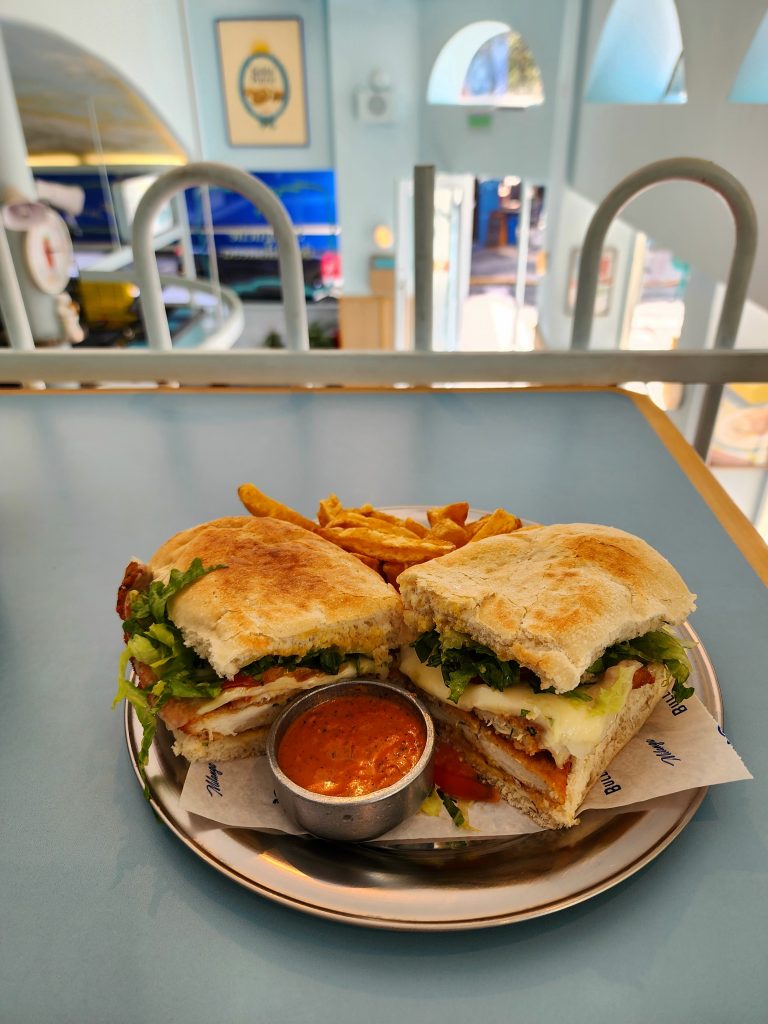

- Morning: Explore the historic center, including Plaza de Mayo, Casa Rosada
- Afternoon: La Boca, Recoleta, Palermo,and San Telmo Market (if Sunday)
- Evening: Attend a tango show with dinner.
In Buenos Aires, Argentina, a variety of key attractions highlight the city’s rich cultural heritage and vibrant atmosphere.
Begin your journey at the iconic Plaza de Mayo, a historic square surrounded by significant landmarks such as the Casa Rosada, the presidential palace with its distinctive pink façade. Nearby, the Metropolitan Cathedral (Catedral Metropolitana) boasts impressive architecture and is the final resting place of General José de San Martín, a national hero.
For a taste of Buenos Aires’ artistic flair, visit the colorful neighborhood of La Boca, known for its lively streets, tango performances, and the famous Caminito walkway adorned with vibrant murals and sculptures.
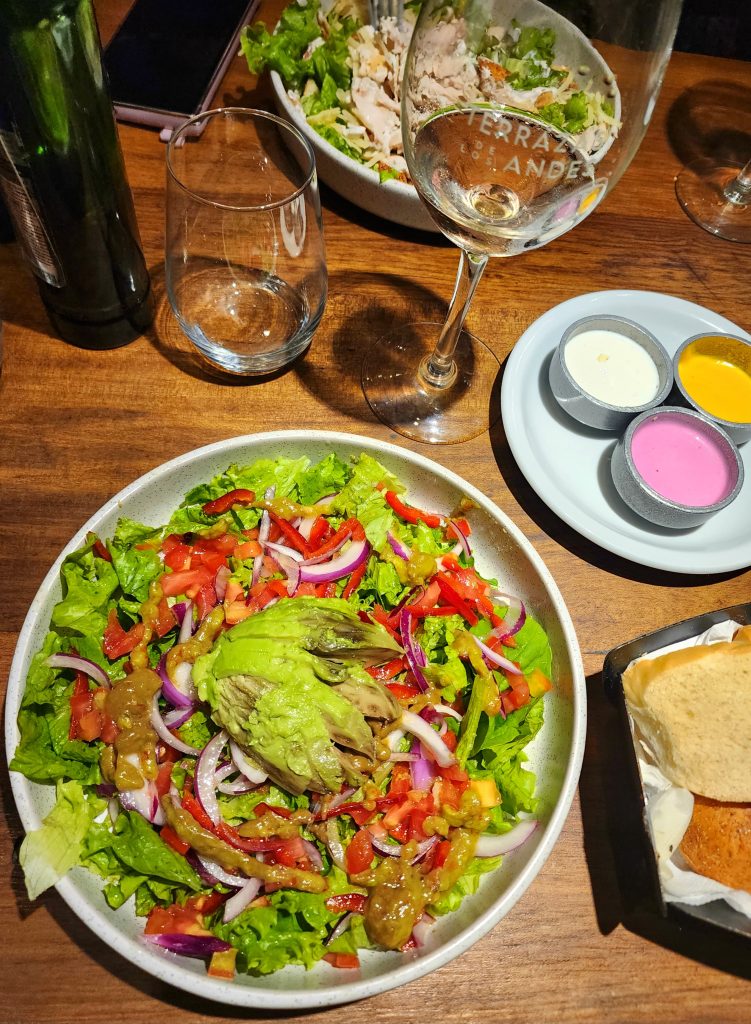

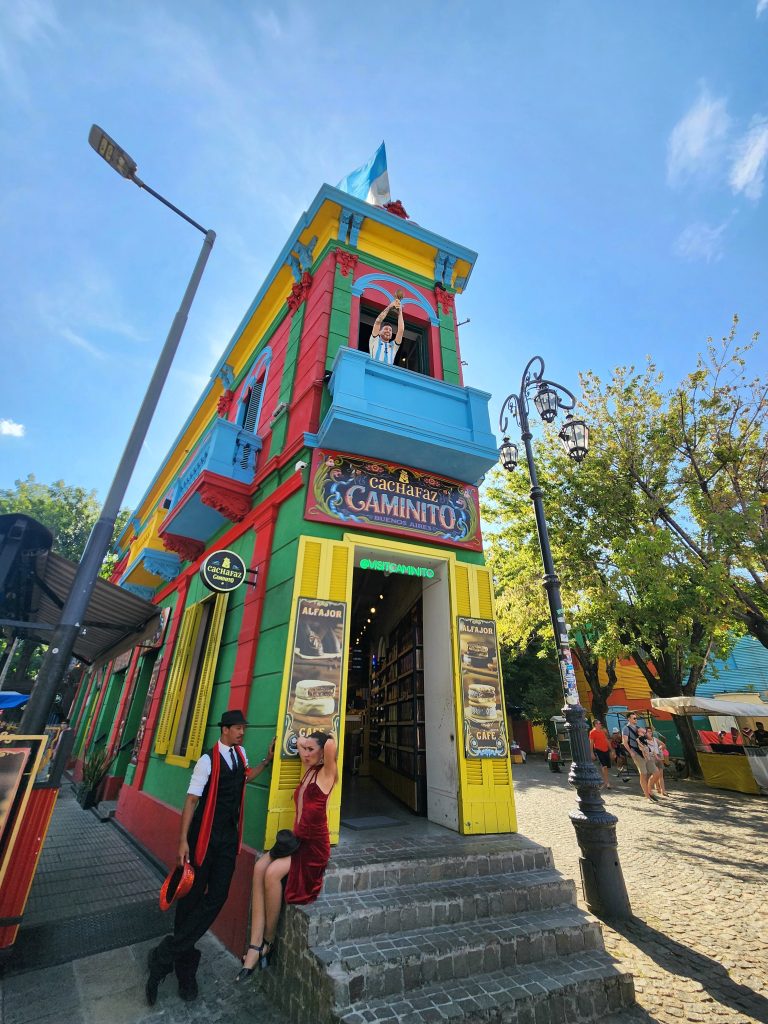
The upscale district of Recoleta offers elegant architecture and the renowned Recoleta Cemetery, where notable figures such as Eva Perón are buried. Explore the cultural hub of Palermo, home to the sprawling Parque Tres de Febrero, which includes the beautiful Rose Garden (Rosedal) and a planetarium.
The city’s rich cultural life is also reflected in the Teatro Colón, one of the world’s most prestigious opera houses, known for its stunning architecture and exceptional acoustics.
For a taste of local life, visit San Telmo, famous for its antique shops, historic buildings, and the bustling San Telmo Market, particularly lively on Sundays with street performers and artisans. The bustling Avenida 9 de Julio features the iconic Obelisk, a symbol of the city, and is flanked by impressive avenues and cultural landmarks.
Lastly, indulge in Buenos Aires’ renowned culinary scene by dining at traditional parrillas (steakhouses) and exploring the city’s vibrant nightlife in areas like Palermo Soho and Puerto Madero.
Day 11: Tigre Delta Day Trip
- Morning: Take a train to Tigre, explore the Tigre Delta by boat or for ease book a day trip
- Afternoon: Visit the Puerto de Frutos market and the Tigre Art Museum.
- Evening: Return to Buenos Aires, enjoy dinner.
Day 12: Colonia del Sacramento Day Trip
- Morning: Ferry to Colonia del Sacramento, Uruguay. – 5 days in Uruguay itinerary
- Afternoon: Explore the historic quarter, a UNESCO World Heritage site.
- Evening: Return to Buenos Aires, relax at your accommodation.
Stay a night here or get back & do another day trip tomorrow
Day 13: Day Trip to Mar Del Plata
- Mid-morning: Drive/take a train there or a day trip to Mar Del Plata, enjoy the beaches (because if you have another week you are heading to the cold down south in Patagonia tomorrow), lively nightlife, and rich cultural history, wrap it up with farewell dinner.
Day 14: Departure from Buenos Aires
Argentina itinerary 3 weeks
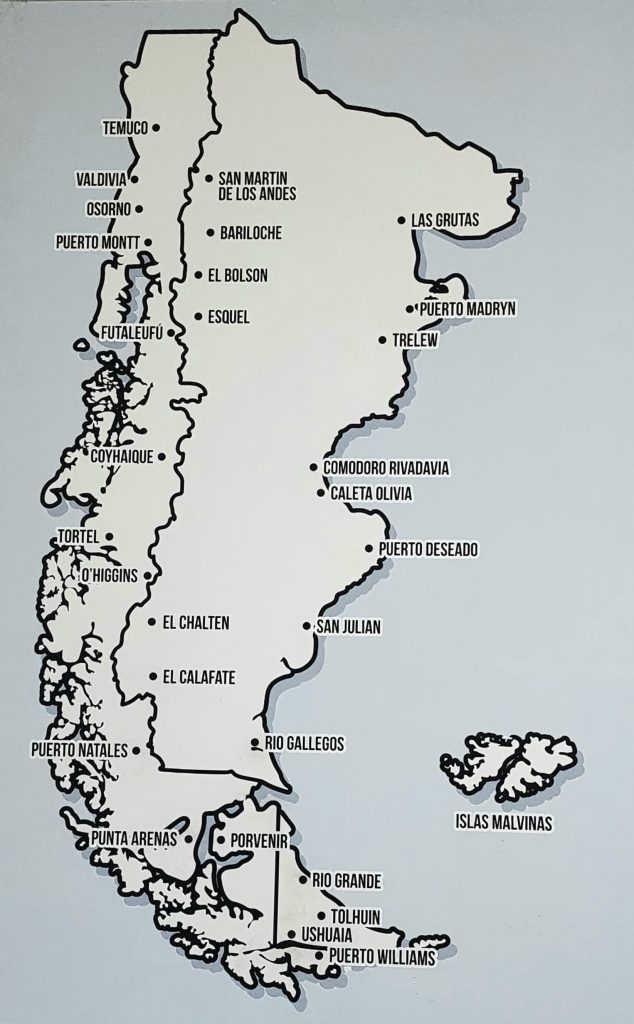
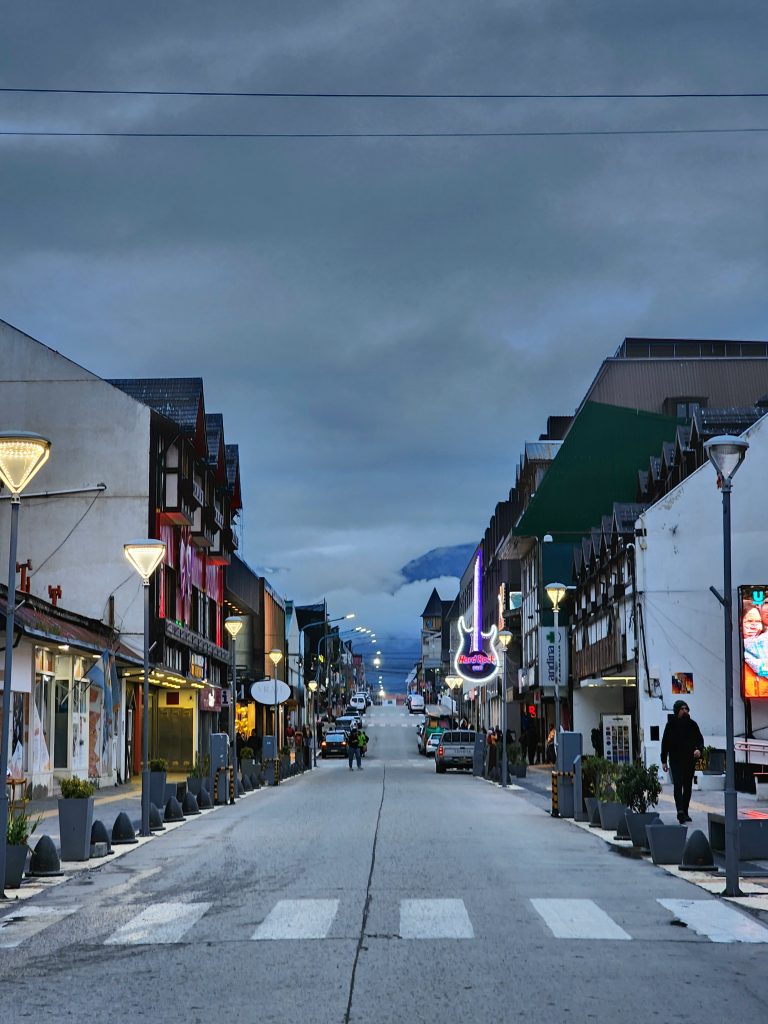
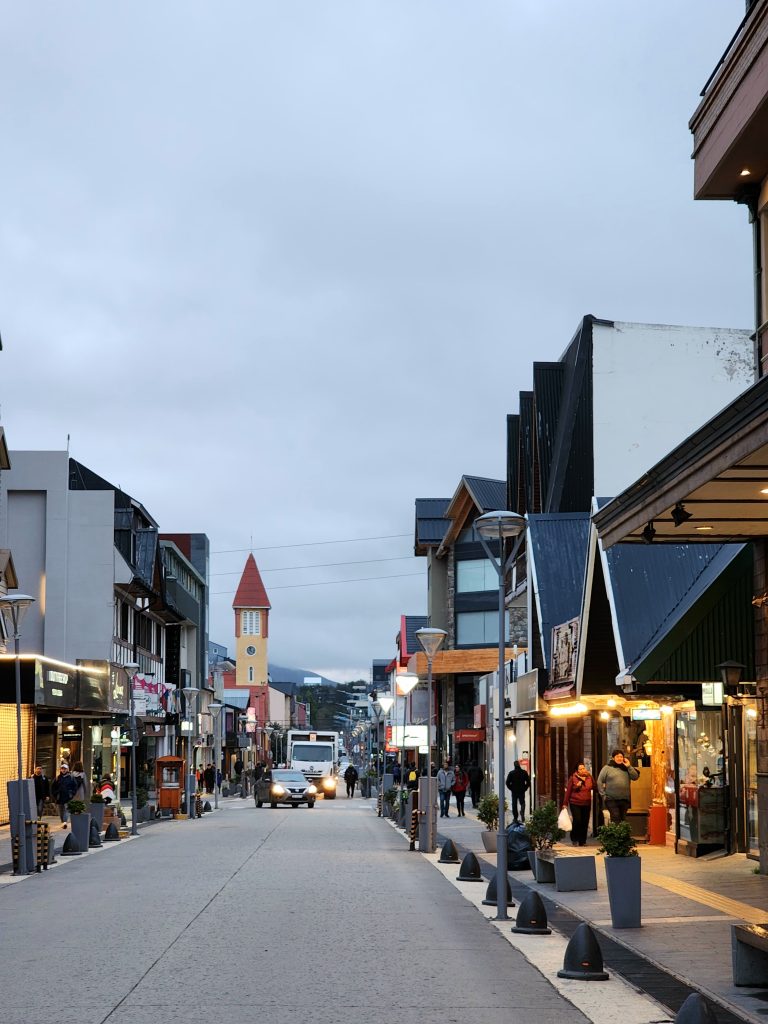
3-Week Itinerary: Patagonia, Ushuaia, and Iguazu Falls

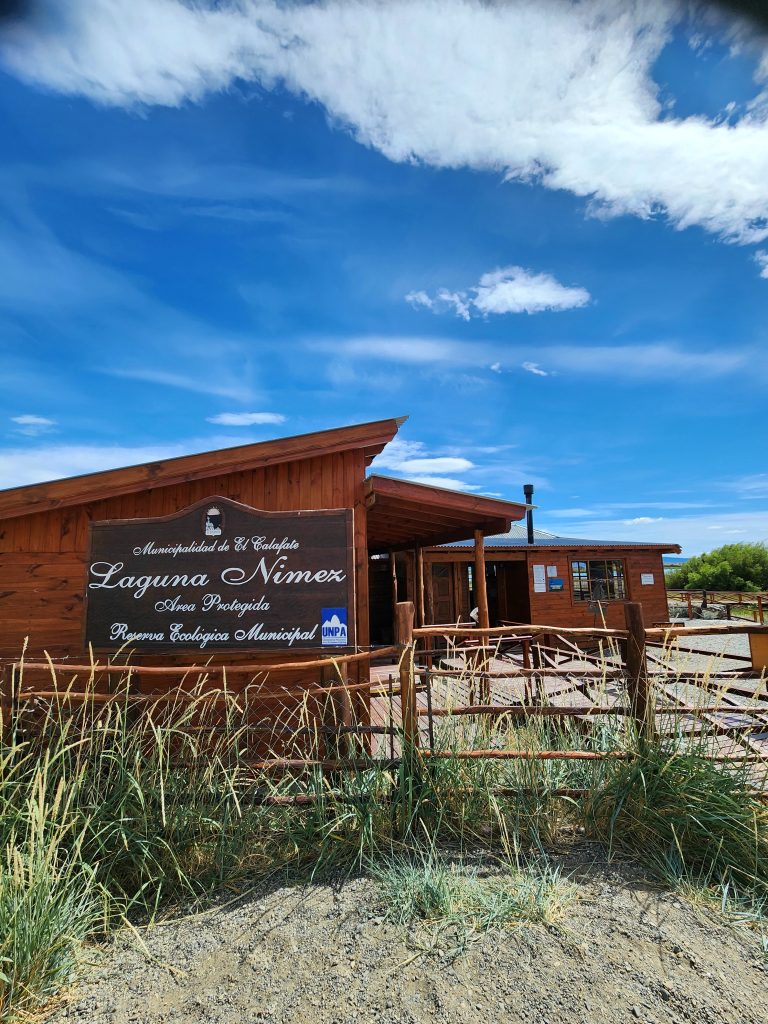




Day 14: Buenos Aires to El Calafate
- Morning: Fly from Buenos Aires to Comandante Armando Tola International Airport in El Calafate.
- Afternoon: Arrive in El Calafate, check into your accommodation.
- Evening: Explore the town and enjoy dinner at a local restaurant.
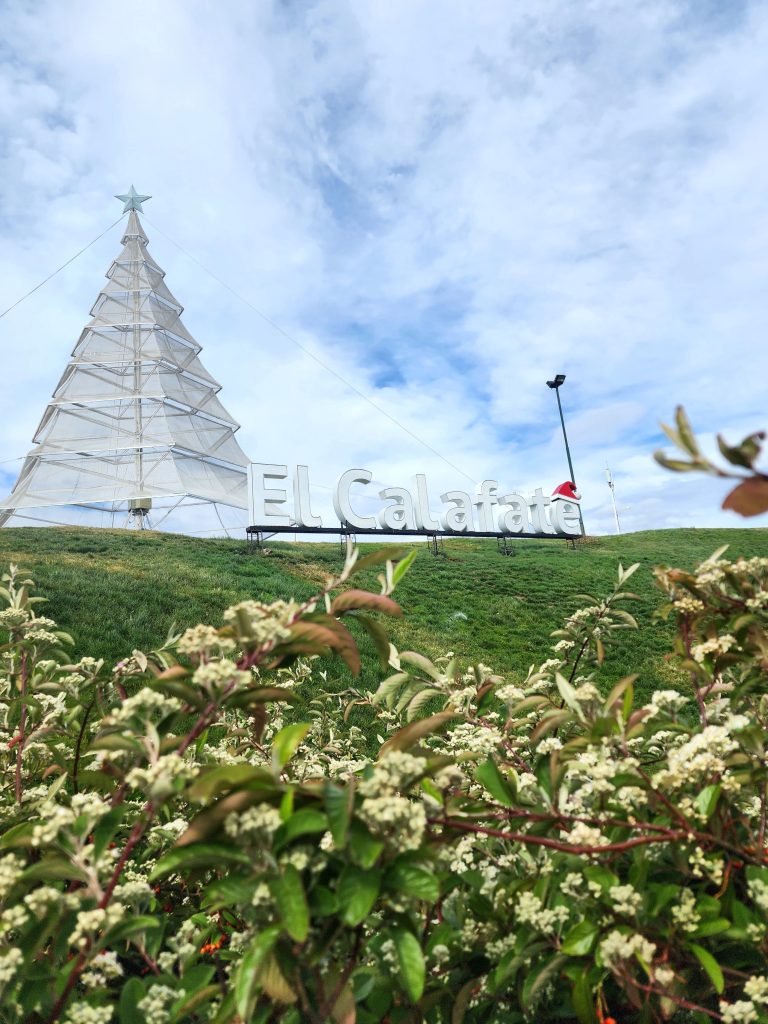
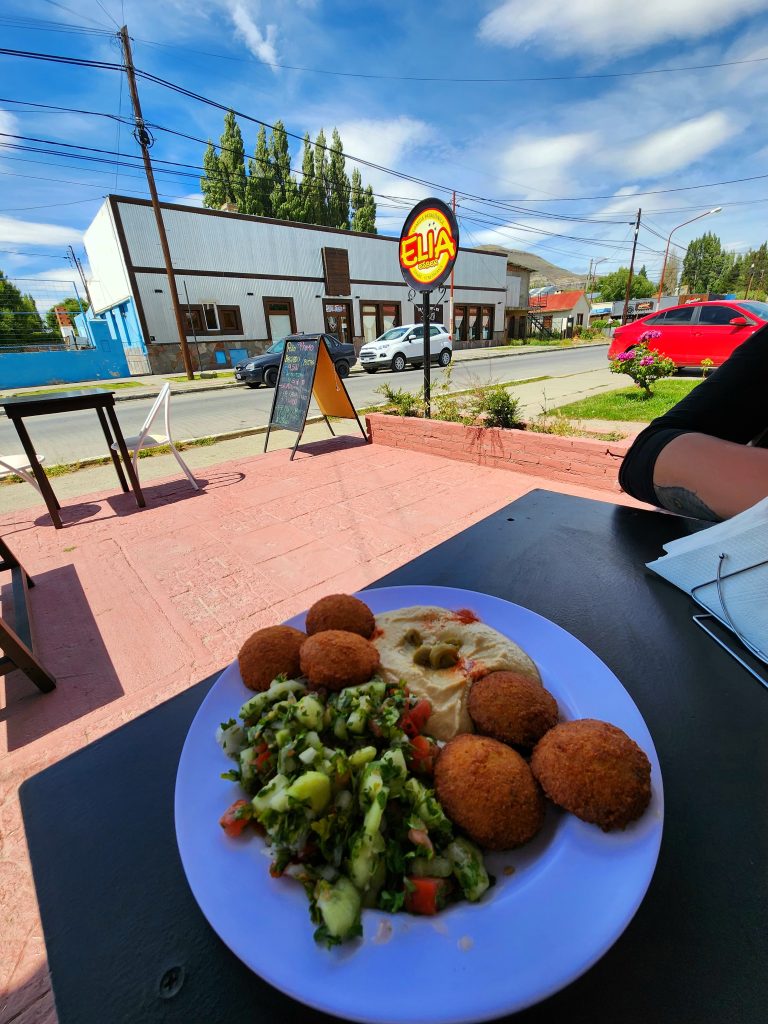
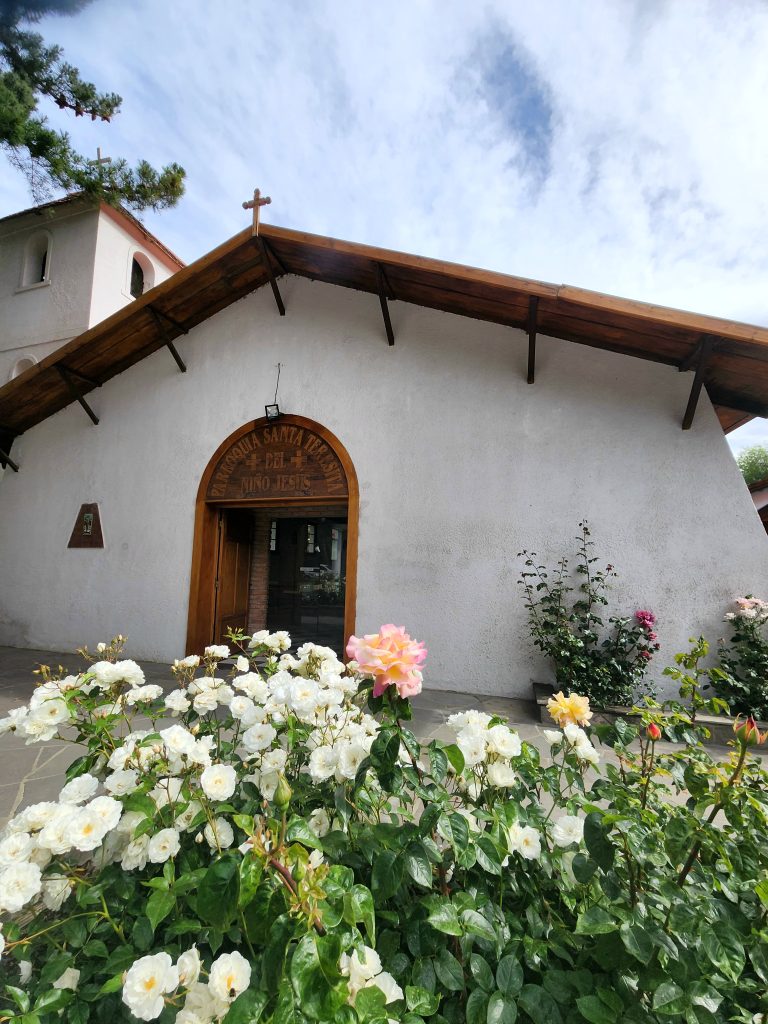



Day 15: Day Trip to Perito Moreno Glacier
- Morning: Take a guided tour to Perito Moreno Glacier.
- Afternoon: Walk along the viewing platforms to admire the glacier’s majesty.
- Evening: Return to El Calafate and relax.
Day 16: Day Trip to Estancia Cristina
- Morning: Boat trip to Estancia Cristina, including a visit to the Upsala Glacier.
- Afternoon: Explore the estancia, enjoy a guided 4×4 tour to the Upsala Glacier viewpoint.
- Evening: Return to El Calafate and unwind.
Day 17: Travel from El Calafate to El Chaltén
- Morning: Take a bus from El Calafate to El Chaltén (approx. 3 hours).
- Afternoon: Arrive in El Chaltén, check into your accommodation.
- Evening: Explore the town and prepare for hiking.
Day 18: Hike to Laguna de los Tres
- Morning: Start the hike to Laguna de los Tres. Long hike, high altitude be prepared with right kind of clothing.
- Afternoon: Enjoy stunning views of Mount Fitz Roy.
- Evening: Return to El Chaltén and relax.
Day 19: Hike to Laguna Torre
- Morning: Begin the hike to Laguna Torre.
- Afternoon: Reach the lagoon and admire the views of Cerro Torre.
- Evening: Return to El Chaltén and rest.
Day 20: Hike to Loma del Pliegue Tumbado
- Morning: Hike to the viewpoint at Loma del Pliegue Tumbado.
- Afternoon: Enjoy panoramic views of the mountains and valleys.
- Evening: Return to El Chaltén and unwind.
Day 21: Optional Hike or Rest Day
- Morning: Relax or city tour below or take an optional short hike.
- Afternoon: Free time to explore the town.
- Evening: Prepare for the next leg of the journey.
1 month in Argentina Itinerary


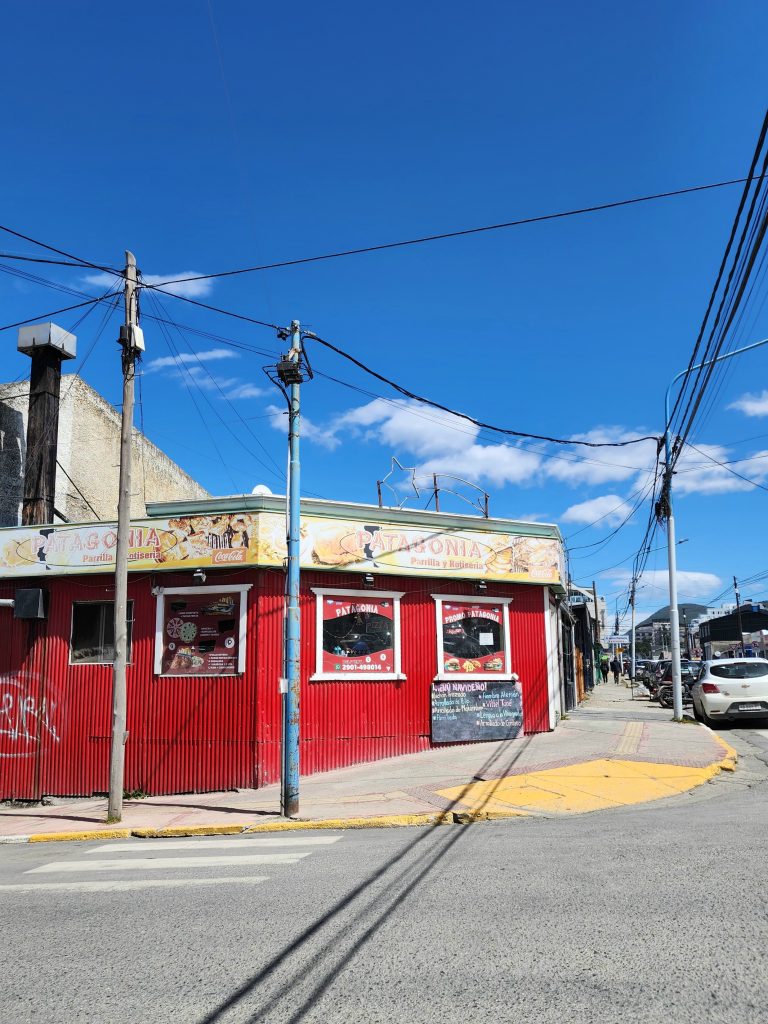
Day 22: El Chaltén to Ushuaia
- Morning: Travel from El Chaltén to Ushuaia (via El Calafate if necessary).
- Afternoon: Arrive in Ushuaia, check into your accommodation.
- Evening: Rest and explore the town.
Day 23: Lake Esmeralda


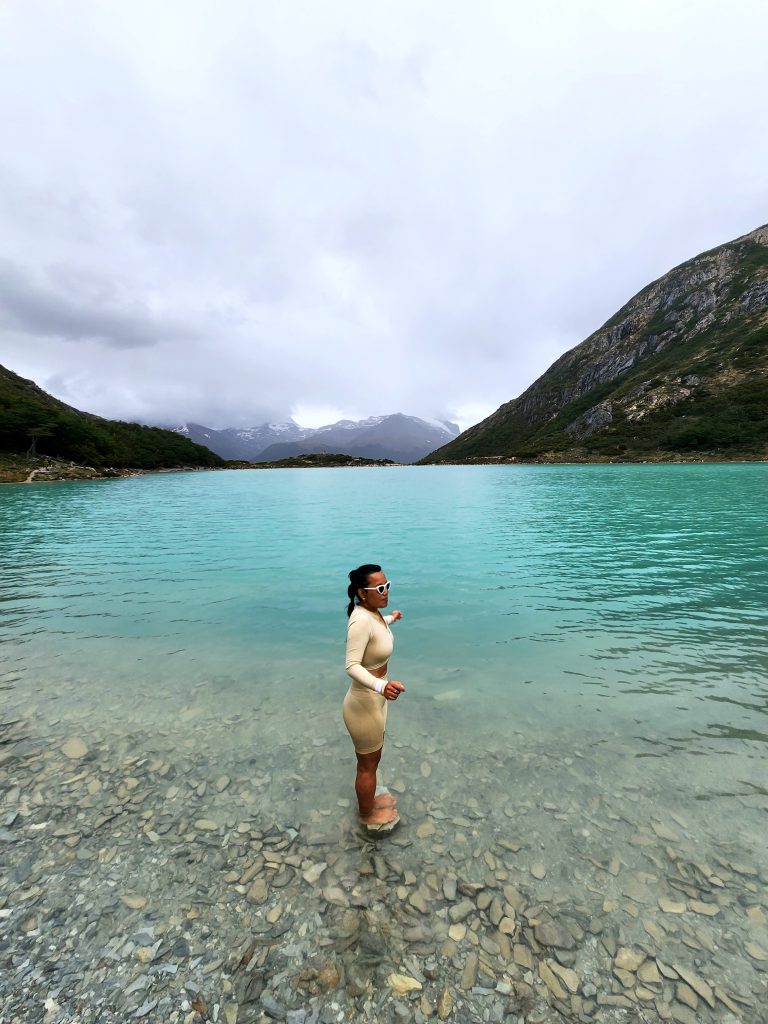
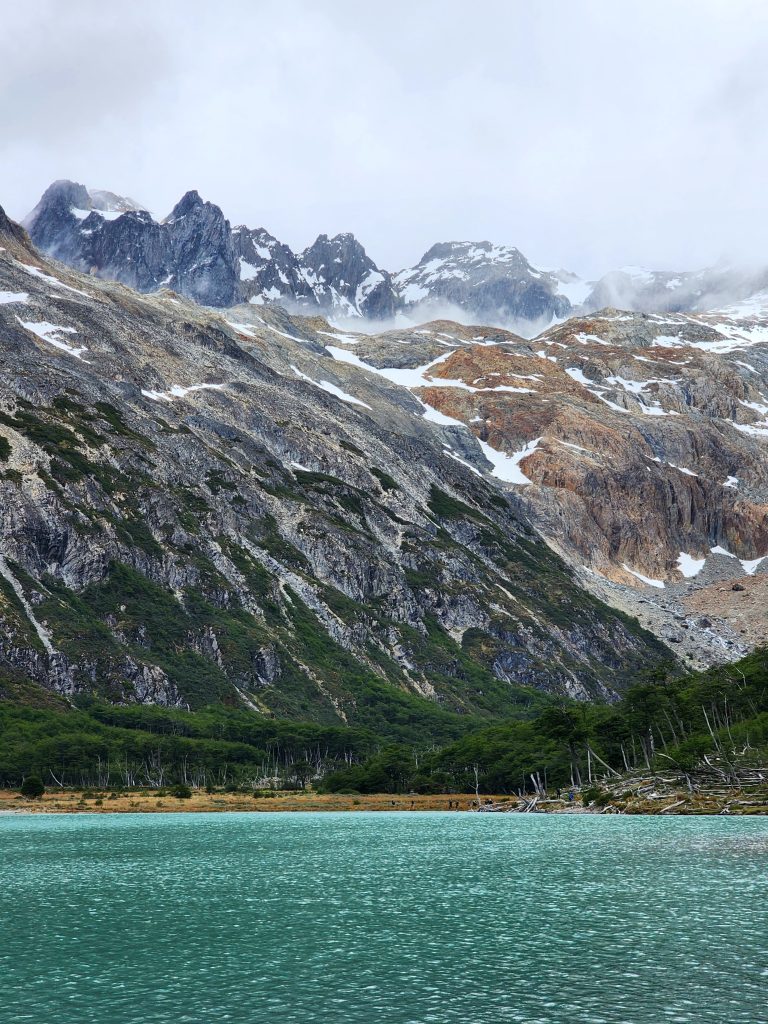

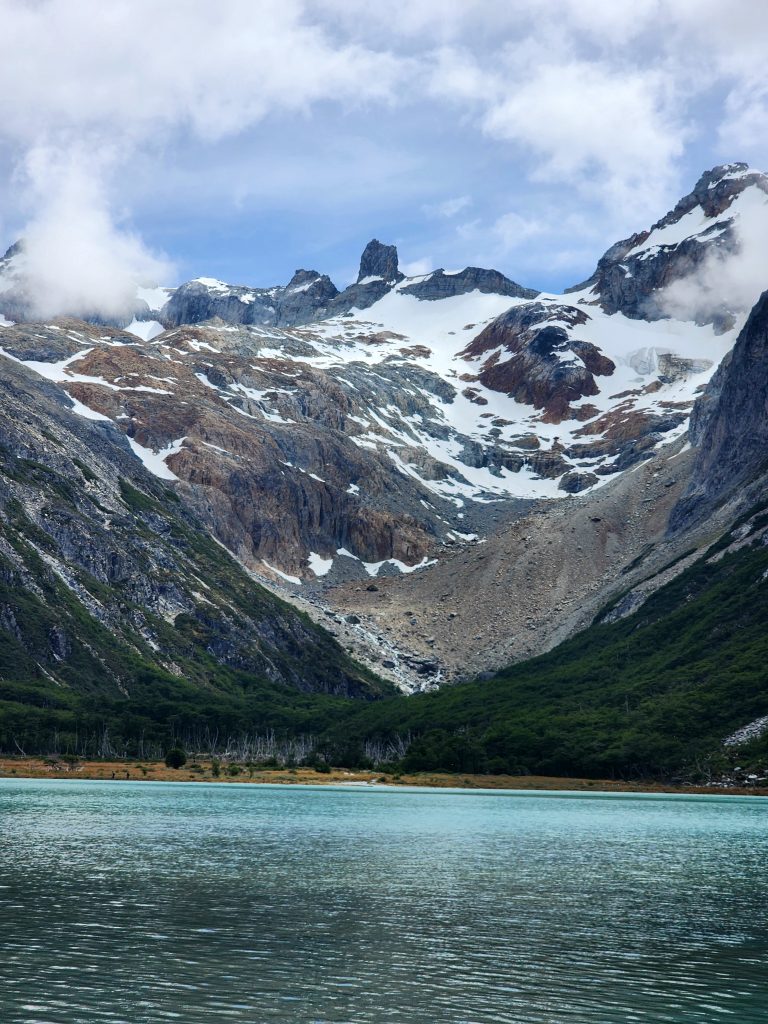

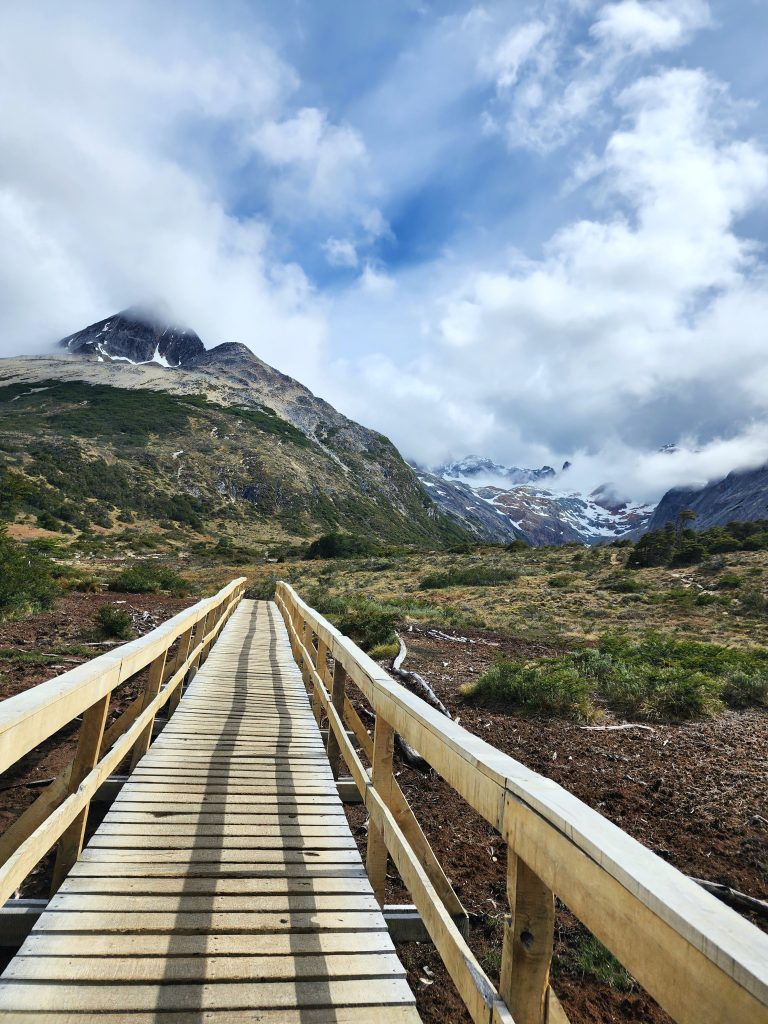

- Morning: Hike to Lake Esmeralda.
- Afternoon: Enjoy the beautiful scenery and take photographs.
- Evening: Return to Ushuaia and relax.
Day 24: Martial Glacier
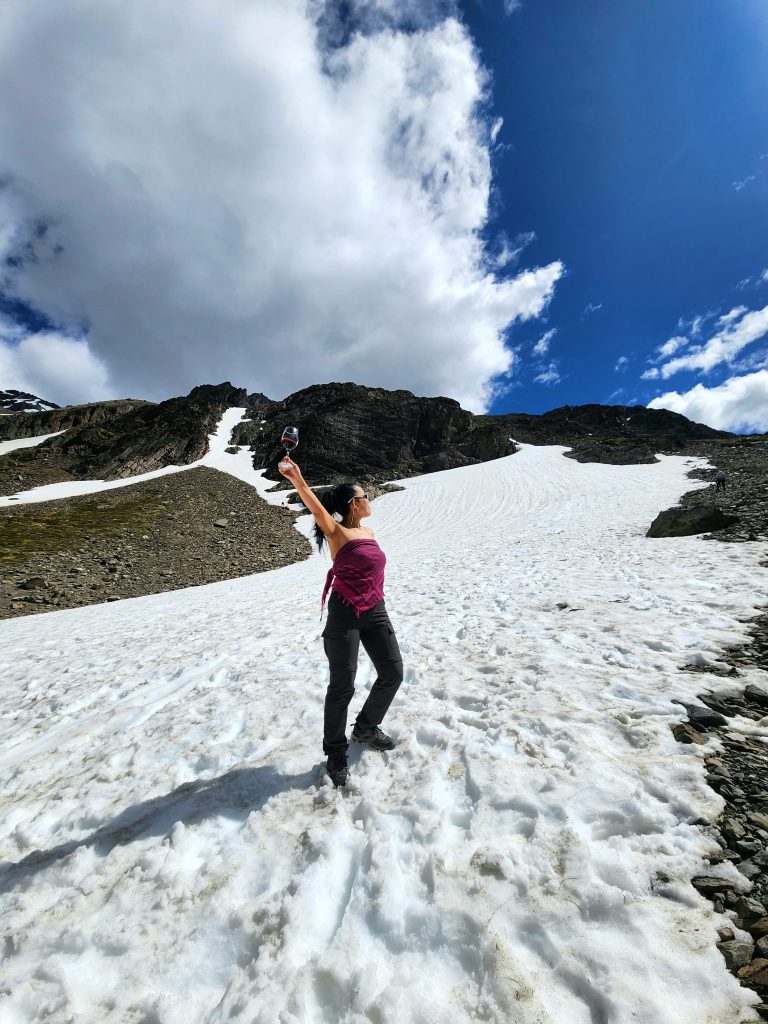
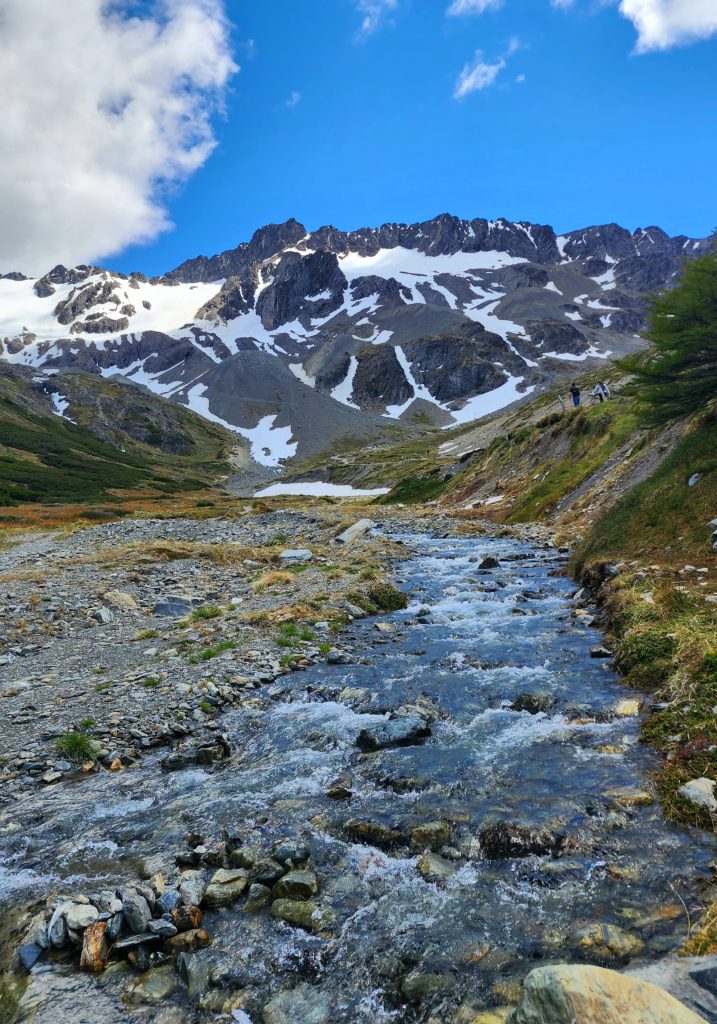
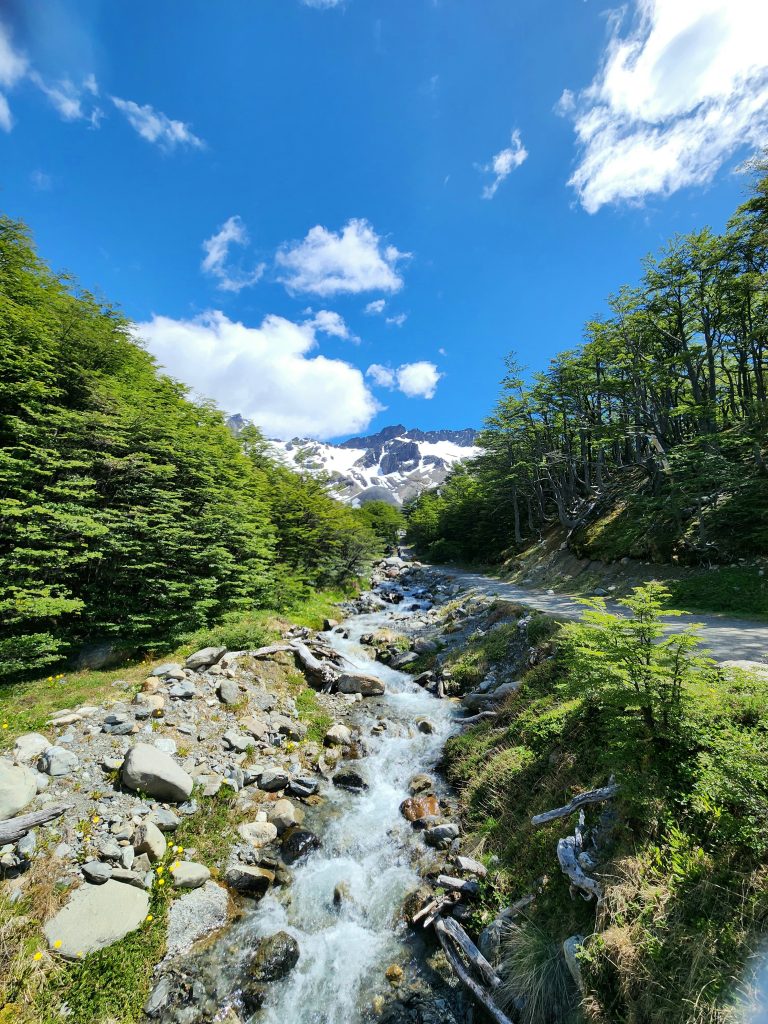
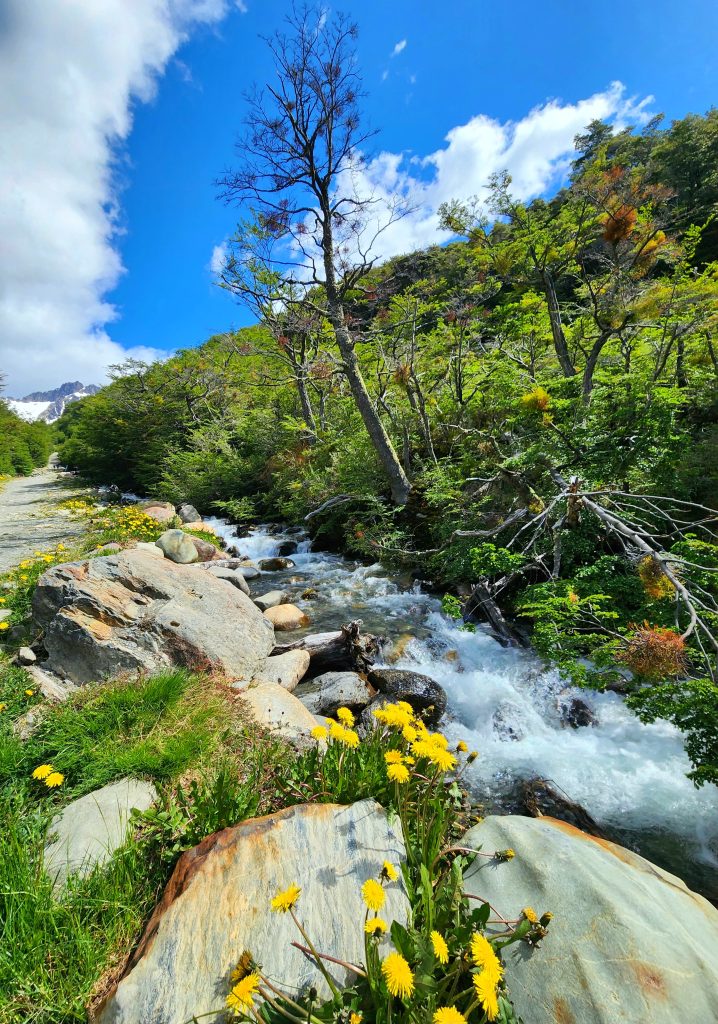


- Morning: Visit the Martial Glacier for a day hike.
- Afternoon: Explore the glacier and surrounding areas.
- Evening: Return to Ushuaia and unwind.
Day 25: Beagle Channel
- Morning: Take a boat tour of the Beagle Channel.
- Afternoon: Explore the wildlife and scenic views.
- Evening: Return to Ushuaia and rest.
Day 26: Tierra del Fuego National Park


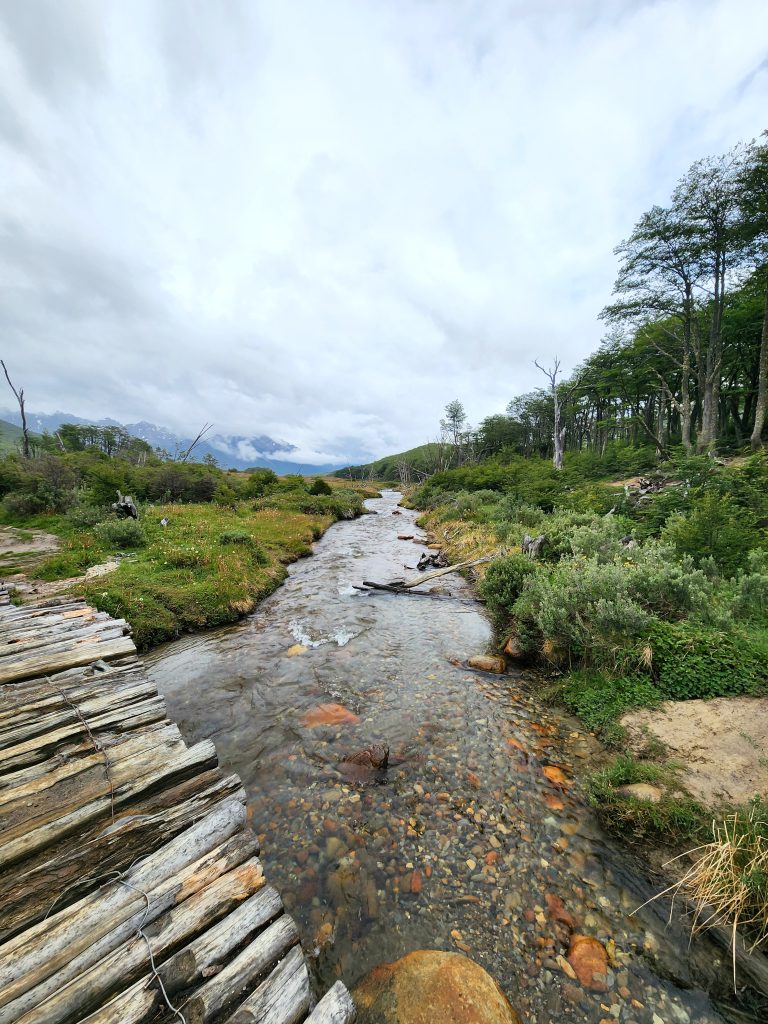
- Morning: Head to Tierra del Fuego National Park for a full day hike.
- Afternoon: Explore the diverse landscapes and wildlife.
- Evening: Return to Ushuaia and relax.
Day 27: Optional Hike or Activity
- Morning: Choose an optional hike or another activity in Ushuaia.
- Afternoon: Explore more of the city or surroundings.
- Evening: Prepare for the journey to Iguazu Falls.
Day 28: Ushuaia to Iguazu Falls
- Morning: Fly from Ushuaia to Puerto Iguazu.
- Afternoon: Arrive in Puerto Iguazu, check into your accommodation.
- Evening: Relax and prepare for visiting the falls.
Alternately, if you have been thinking about ticking off Antarctica from your bucket list you may want to read- How to plan a trip to Antarctica I mean you will be in the best spot aka Ushuaia the major gateway to Antarctica so worth a read even if don’t end up going now or fly back for next time.
Day 29: Iguazu Falls (Argentinian Side)
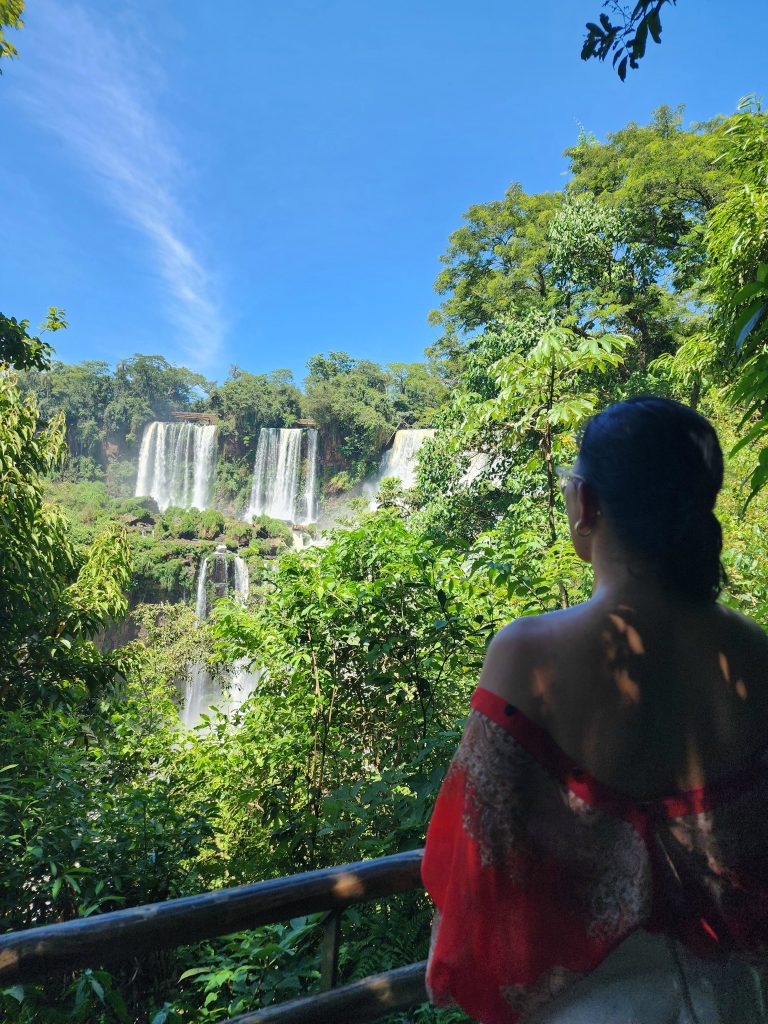
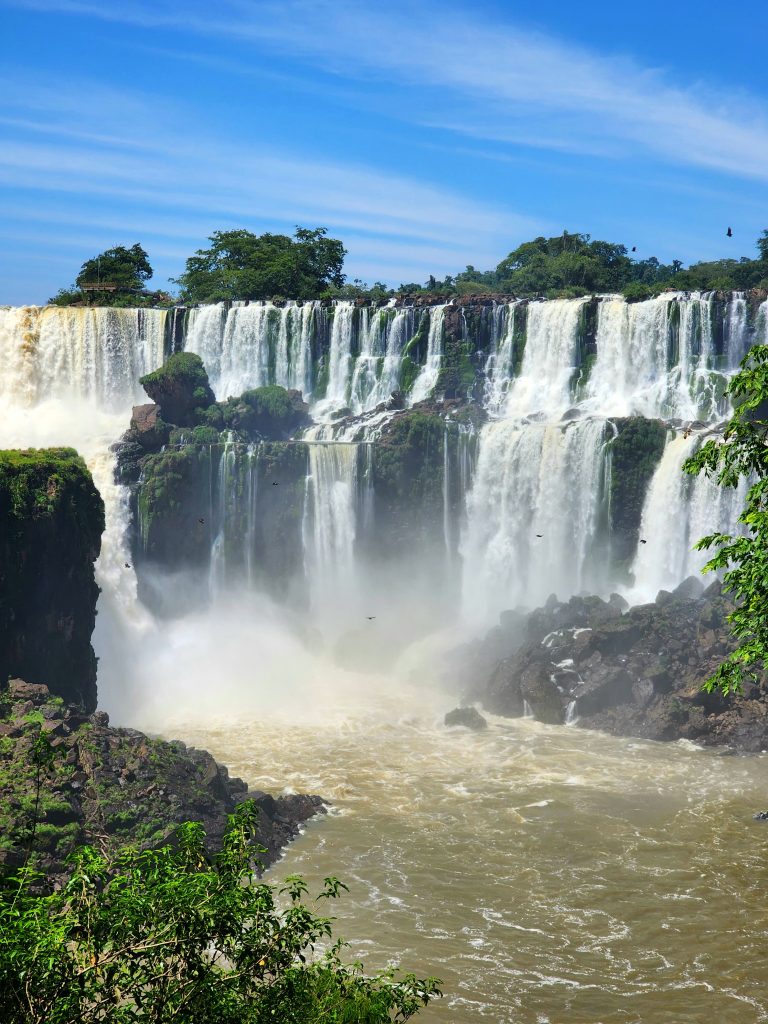

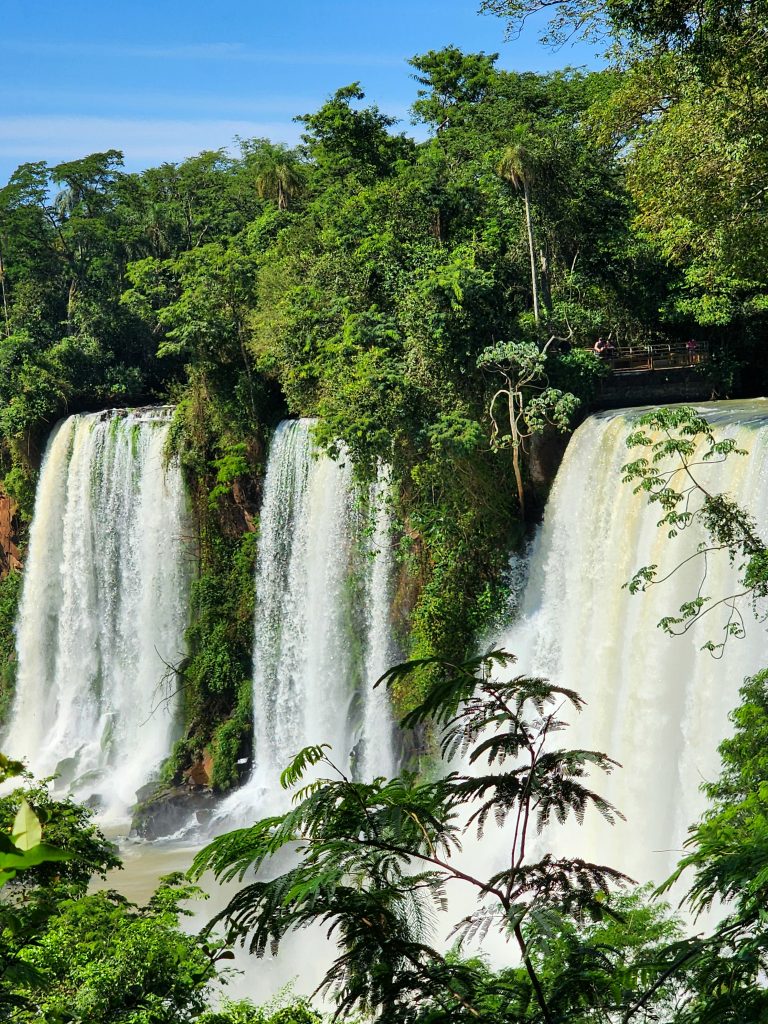
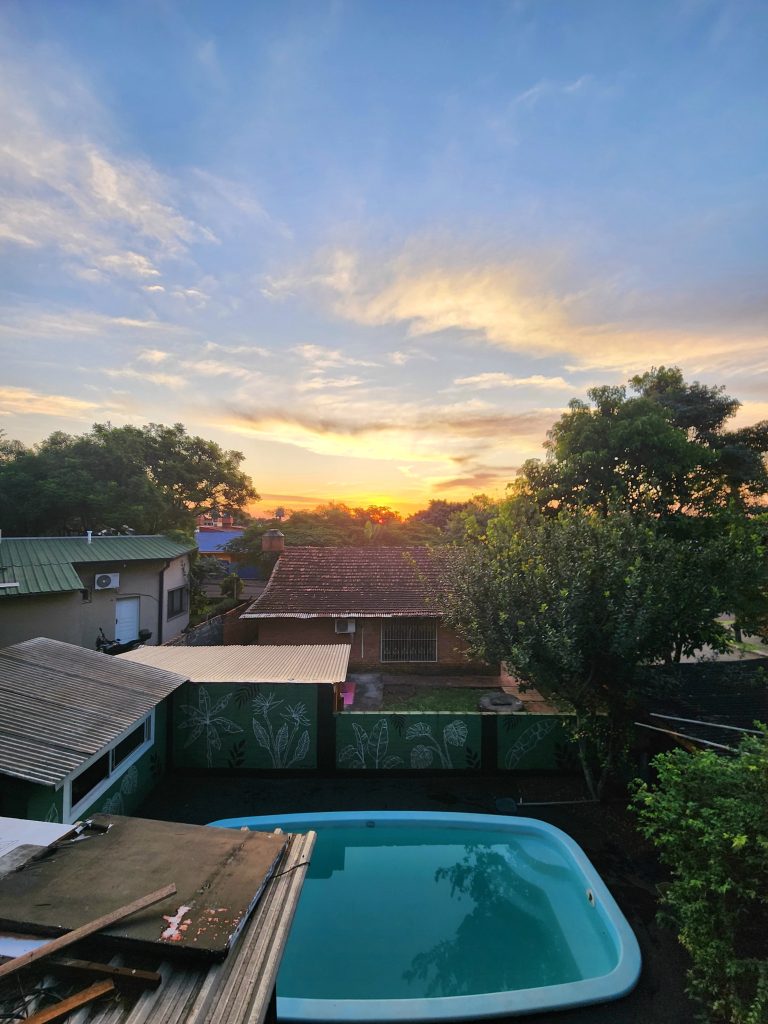


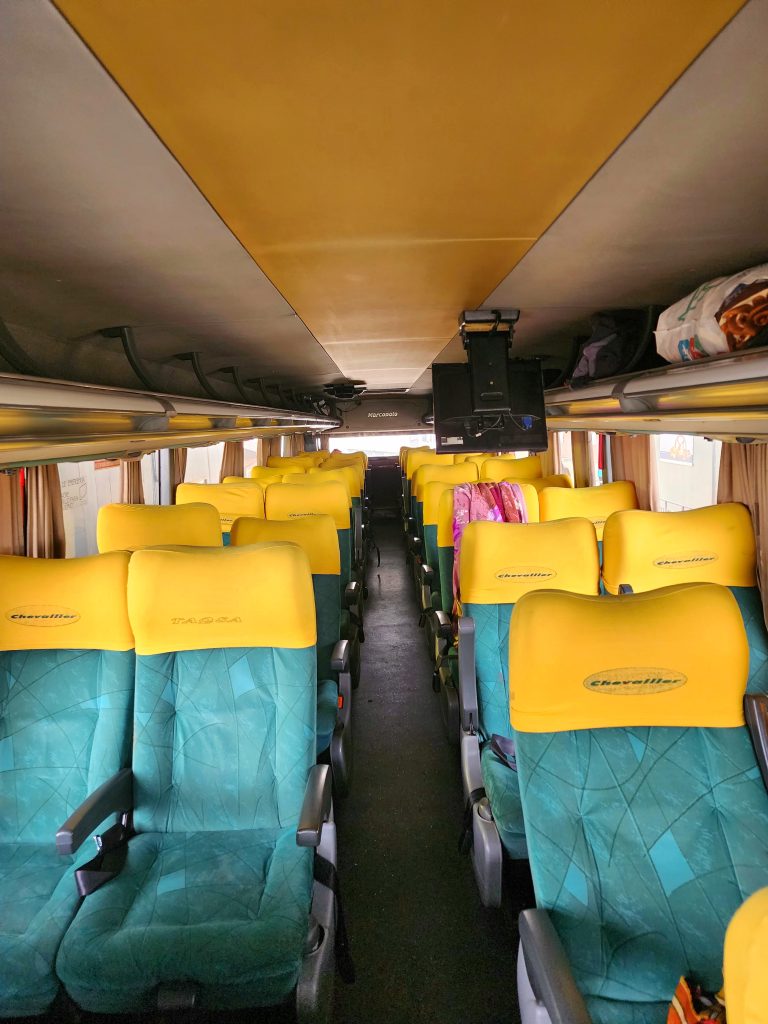


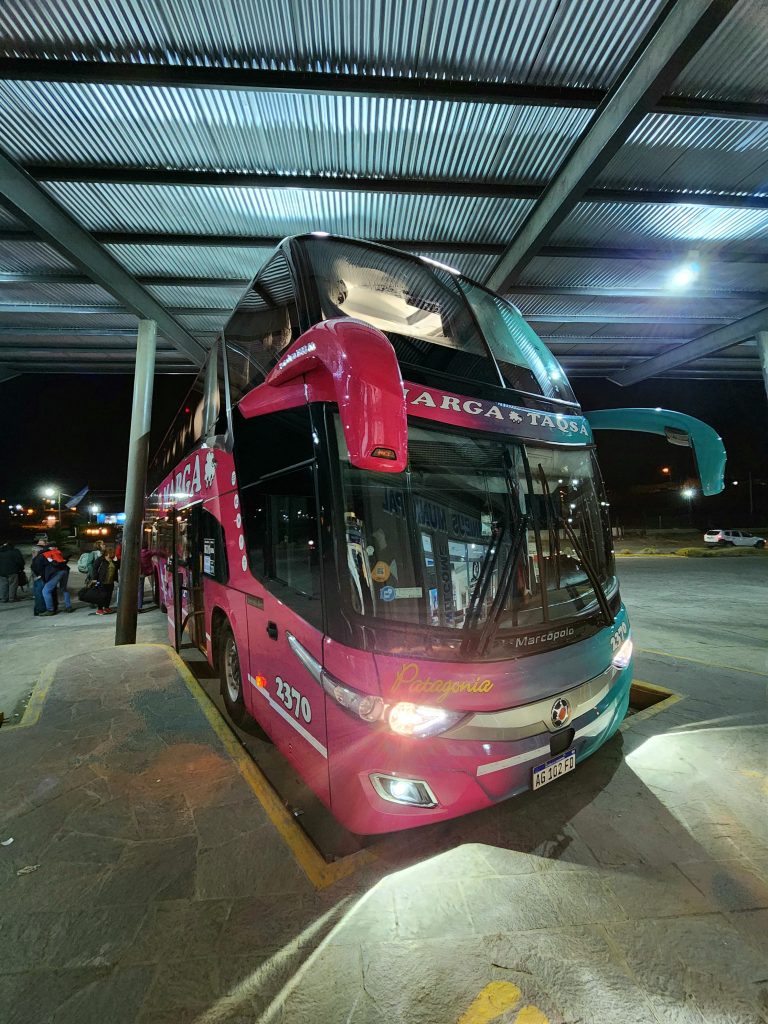

- Morning: Explore the Argentinian side of Iguazu Falls.
- Afternoon: Take the train to the Devil’s Throat and other viewing points.
- Evening: Return to your accommodation and relax.
Day 30: Cross Over to Paraguay
- Morning: Explore any additional attractions around Iguazu.
- Afternoon: Travel from Puerto Iguazu to Ciudad del Este, Paraguay.
- Evening: Conclude your journey in Paraguay. Backpacking Paraguay itinerary and travel tips
I hope this blog gave you insights on how to plan a trip to Argentina.


Let me know in the comments:
If you have any more questions about how to plan a trip to Argentina
Your next bucket list – How to plan a trip to Antarctica?
Solo travel to rio de janeiro
San pedro de atacama to uyuni
Backpacking Paraguay itinerary and travel tips
Chile itinerary 3 weeks
Venezuela itinerary and travel tips
Paramaribo itinerary & travel tips
5 days in Uruguay itinerary
Backpacking 1 month in Central America itinerary
1 week in Seoul
7 days in Mongolia travel itinerary
Solo trip to Peru One month itinerary
Solo female travel Colombia
7 days backpacking in Ecuador itinerary
Solo female travel to Georgetown Guyana
5 days in Oaxaca itinerary
2 days in Mexico City itinerary
7 Days Itinerary in Georgia
4 Days in Azerbaijan Itinerary
Best places to visit from Split
2 days in Split, Croatia
Solo traveling to Mostar
Solo female travel to Kotor
Solo female travel to Budva
Solo female travel Albania
Warsaw by Train covers warsaw travel tips
Check out One day in Luxembourg, western Europe
Day trip from Zurich to Liechtenstein
Travel tips to South America
Fiji solo travel guide
Australia east coast must-see
Backpacking in Melbourne, Australia
Digital nomad guide to Melbourne
14 best area to stay in Melbourne CBD
Master Sydney travel guide
Solo travel guide to Brisbane
Exploring Adelaide the best way is a must-read
Important travel tips for Uluru trip
Melbourne day trips in winter
Day Hikes in Melbourne
Weekend getaway? Check out things to do in Ballarat
Perth solo itinerary
Perth to Darwin roadtrip
Top 5 must do in Darwin, Australia
How to go from Dublin to Howth
Solo female travel Romania
Read a recent day trip to Zaanse Schans from Amsterdam
How about a solo itinerary to Canberra– Australia’s capital city?
Solo trip to Peru, travel tips to South America
Check out the 7 days Hanoi travel guide.
Book accommodation through trusted Booking.com
I have detailed travel resources right here. Save money, learn what and how.
If you like this article, read about my journey to become Nepali Australian travel blogger , follow my adventures on Instagram, Facebook, YouTube, Twitter, and Pinterest, but most importantly sign up to my e-mail list to keep up with updates and travel posts!


